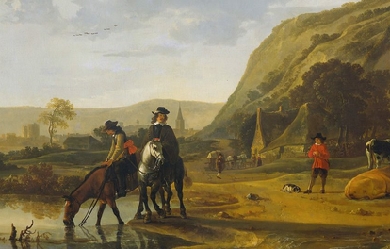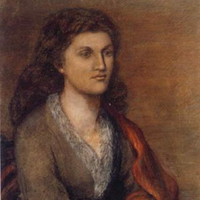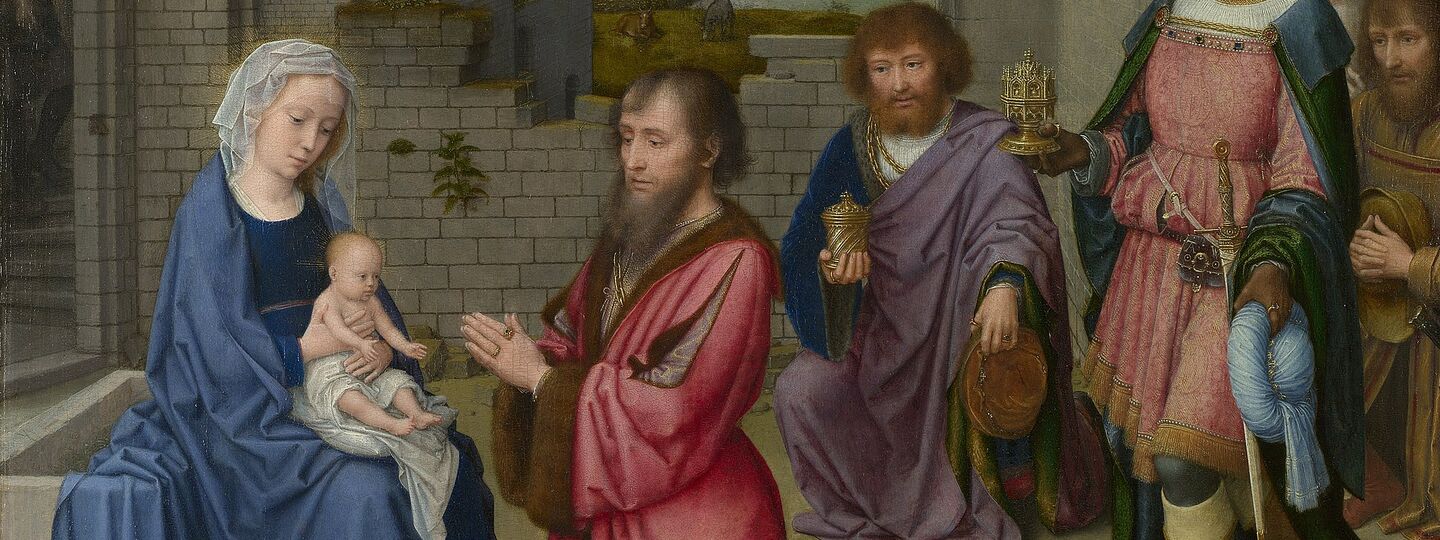
Info
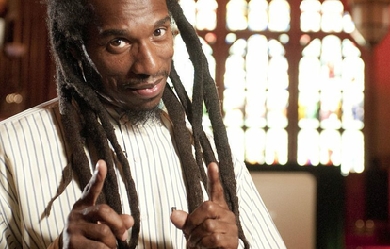
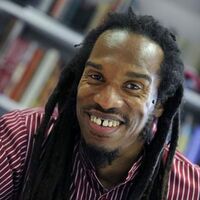
Benjamin Obadiah Iqbal Zephaniah (born 15 April 1958, Birmingham, England) is an English writer and dub poet. He is a well-known figure in contemporary English literature, and was included in The Times list of Britain's top 50 post-war writers in 2008. Zephaniah was born and raised in the Handsworth district of Birmingham, which he called the “Jamaican capital of Europe”. He is the son of a Barbadian postman and a Jamaican nurse. A dyslexic, he attended an approved school but left aged 13 unable to read or write. He writes that his poetry is strongly influenced by the music and poetry of Jamaica and what he calls “street politics”.
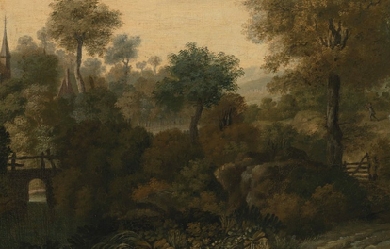
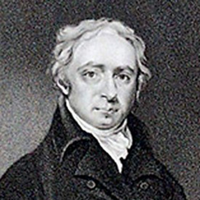
William Lisle Bowles (24 September 1762– 7 April 1850) was an English priest, poet and critic. Life and career Bowles was born at King’s Sutton, Northamptonshire, where his father was vicar. At the age of 14 he entered Winchester College, where the headmaster at the time was Dr Joseph Warton. In 1781 Bowles left as captain of the school, and went on to Trinity College, Oxford, where he had won a scholarship. Two years later he won the Chancellor’s prize for Latin verse. Bowles came from a line of Church of England clergymen. His great-grandfather Matthew Bowles (1652–1742), grandfather Dr Thomas Bowles (1696–1773) and father William Thomas Bowles (1728–86) had all been parish priests. After taking his degree at Oxford, Bowles followed his forebears into the Church of England, and in 1792, after serving as curate in Donhead St Andrew, was appointed vicar of Chicklade in Wiltshire. In 1797 he received the vicarage of Dumbleton in Gloucestershire, and in 1804 became vicar of Bremhill in Wiltshire, where he wrote the poem seen on Maud Heath’s statue. In the same year his bishop, John Douglas, collated him to a prebendal stall in Salisbury Cathedral. In 1818 he was made chaplain to the Prince Regent, and in 1828 he was elected residentiary canon of Salisbury. Works * In 1789 he published, in a very small quarto volume, Fourteen Sonnets, which were received with extraordinary favour, not only by the general public, but by such men as Samuel Taylor Coleridge and Wordsworth. * The Sonnets even in form were a revival, a return to an older and purer poetic style, and by their grace of expression, melodious versification, tender tone of feeling and vivid appreciation of the life and beauty of nature, stood out in strong contrast to the elaborated commonplaces which at that time formed the bulk of English poetry. Bowles said thereof Poetic trifles from solitary rambles whilst chewing the cud of sweet and bitter fancy, written from memory, confined to fourteen lines, this seemed best adapted to the unity of sentiment, the verse flowed in unpremeditated harmony as my ear directed but are far from being mere elegiac couplets. * The longer poems published by Bowles are not of a very high standard, though all are distinguished by purity of imagination, cultured and graceful diction, and great tenderness of feeling. The most extensive were The Spirit of Discovery (1804), which was mercilessly ridiculed by Lord Byron; The Missionary (1813); The Grave of the Last Saxon (1822); and St John in Patmos (1833). Bowles is perhaps more celebrated as a critic than as a poet.In 1806 he published an edition of Alexander Pope’s works with notes and an essay, in which he laid down certain canons as to poetic imagery which, subject to some modification, were later accepted, but which were received at the time with strong opposition by admirers of Pope and his style. The controversy brought into sharp contrast the opposing views of poetry, which may be roughly described as the natural and the artificial. * Bowles was an amiable, absent-minded, and rather eccentric man. His poems are characterised by refinement of feeling, tenderness, and pensive thought, but are deficient in power and passion. Bowles maintained that images drawn from nature are poetically finer than those drawn from art; and that in the highest kinds of poetry the themes or passions handled should be of the general or elemental kind, and not the transient manners of any society. These positions were attacked by Byron, Thomas Campbell, William Roscoe and others, while for a time Bowles was almost solitary. William Hazlitt and the Blackwood critics came to his assistance, and on the whole Bowles had reason to congratulate himself on having established certain principles which might serve as the basis of a true method of poetical criticism, and of having inaugurated, both by precept and by example, a new era in English poetry. Among other prose works from his prolific pen was a Life of Bishop Ken (two volumes, 1830–1831). Other works include Coombe Ellen and St. Michael’s Mount (1798), The Battle of the Nile (1799), and The Sorrows of Switzerland (1801). * Bowles also enjoyed considerable reputation as an antiquary, his principal work in that department being Hermes Britannicus (1828). His Poetical Works were collected in 1855 as part of the Library Edition of the British Poets, with a memoir by George Gilfillan. Reception * Bowles’ work was important to the young Samuel Taylor Coleridge: * Bowles was the cause in the 1820s of the Alexander Pope controversy into which George Gordon, Lord Byron was drawn. References Wikipedia—https://en.wikipedia.org/wiki/William_Lisle_Bowles
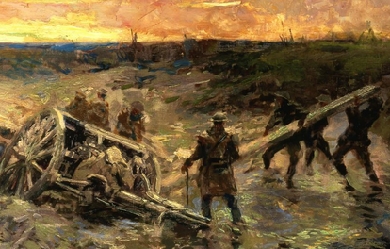
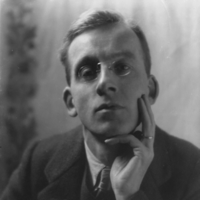
Wilfrid Wilson Gibson (2 October 1878– 26 May 1962) was a British Georgian poet, associated with World War I but also the author of much later work. Early work Gibson was born in Hexham, Northumberland, and left the north for London in 1914 after his mother died. He had been publishing poems in magazines since 1895, and his first collections in book form were published by Elkin Mathews in 1902. His collections of verse plays and dramatic poems The Stonefolds and On The Threshold were published by the Samurai Press (of Cranleigh) in 1907, followed next year by the book of poems, The Web of Life. Despite his residence in London, and later in Gloucestershire, many of Gibson’s poems both then and later, have Northumberland settings: Hexham’s Market Cross; Hareshaw; and The Kielder Stone. Others deal with poverty and passion amid wild Northumbrian landscapes. Still others are devoted to fishermen, industrial workers and miners, often alluding to local ballads and the rich folk-song heritage of the North East. It was in London that he met both Edward Marsh and Rupert Brooke, becoming a close friend and later Brooke’s literary executor (with Lascelles Abercrombie and Walter de la Mare). This was at the period when the first Georgian Poetry anthology was being hatched. Gibson was one of the insiders. During the early part of his writing life, Wilfrid Wilson Gibson wrote poems that featured the “macabre.” One such poem is Flannan Isle, based on a real life mystery. Gibson was one of the founders of the so-called ”Dymock poets”, a community of writers who settled briefly, before the outbreak of the Great War, in the village of Dymock, in north Gloucestershire. Reputation His reputation was eclipsed somewhat by the Ezra Pound-T. S. Eliot school of Modernist poetry; his work remained popular. Further reading Dominic Hibberd, Wilfrid Gibson and Harold Monro, the Pioneers (Cecil Woolf, 2006) References Wikipedia—https://en.wikipedia.org/wiki/Wilfrid_Wilson_Gibson
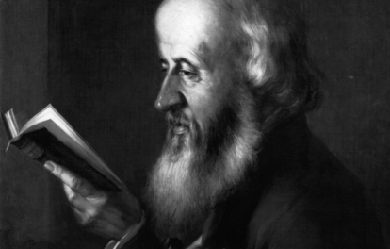
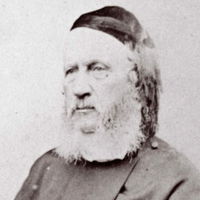
William Barnes (22 February 1801– 7 October 1886) was an English writer, poet, Church of England priest, and philologist. He wrote over 800 poems, some in Dorset dialect, and much other work, including a comprehensive English grammar quoting from more than 70 different languages. Barnes was born at Rushay in the parish of Bagber, Dorset, the son of a farmer. His formal education finished when he was 13 years old. Between 1818 and 1823 he worked in Dorchester, the county town, as a solicitor’s clerk, then moved to Mere in neighbouring Wiltshire and opened a school. During his time here he began writing poetry in the Dorset dialect, as well as studying several languages (Italian, Persian, German and French, in addition to Greek and Latin), playing musical instruments (violin, piano and flute) and practising wood-engraving. He married Julia Miles, the daughter of an exciseman from Dorchester, in 1827, then in 1835 moved back to the county town, where again he ran a school. The school was initially in Durngate Street, then was moved to South Street. A second move to another South Street site made the school a neighbour of an architect’s practice where Thomas Hardy was an apprentice. The architect, John Hicks, was interested in literature and the classics, and when disputes about grammar occurred in the practice, Hardy would visit Barnes next door for an authoritative opinion.
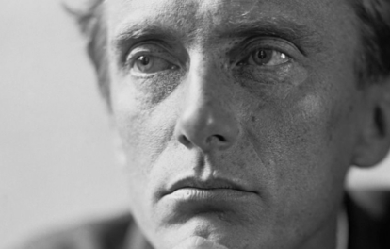
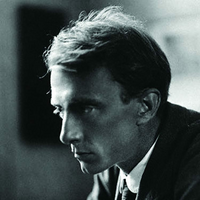
Philip Edward Thomas (3 March 1878– 9 April 1917) was a British poet, essayist, and novelist. He is commonly considered a war poet, although few of his poems deal directly with his war experiences, and his career in poetry only came after he had already been a successful writer and literary critic. In 1915, he enlisted in the British Army to fight in the First World War and was killed in action during the Battle of Arras in 1917, soon after he arrived in France. Life and career Early life Thomas was born in Lambeth, London. He was educated at Battersea Grammar School, St Paul’s School in London and Lincoln College, Oxford. His family were mostly Welsh. In June 1899 he married Helen Berenice Noble (1878-1967), in Fulham, while still an undergraduate, and determined to live his life by the pen. He then worked as a book reviewer, reviewing up to 15 books every week. He was already a seasoned writer by the outbreak of war, having published widely as a literary critic and biographer as well writing on the countryside. He also wrote a novel, The Happy-Go-Lucky Morgans (1913), a “book of delightful disorder”. Thomas worked as literary critic for the Daily Chronicle in London and became a close friend of Welsh tramp poet W. H. Davies, whose career he almost single-handedly developed. From 1905, Thomas lived with his wife Helen and their family at Elses Farm near Sevenoaks, Kent. He rented to Davies a tiny cottage nearby, and nurtured his writing as best he could. On one occasion, Thomas even had to arrange for the manufacture, by a local wheelwright, of a makeshift wooden leg for Davies. Even though Thomas thought that poetry was the highest form of literature and regularly reviewed it, he only became a poet himself at the end of 1914 when living at Steep, East Hampshire, and initially published his poetry under the name Edward Eastaway. Frost in particular encouraged Thomas (then more famous as a critic) to write poetry, and their friendship was so close that the two planned to reside side by side in the United States. By August 1914, the village of Dymock in Gloucestershire had become the residence of a number of literary figures, including Lascelles Abercrombie, Wilfrid Gibson and American poet Robert Frost. Edward Thomas was a visitor at this time. Thomas immortalised the (now-abandoned) railway station at Adlestrop in a poem of that name after his train made a stop at the Cotswolds station on 24 June 1914, shortly before the outbreak of the First World War. War service Thomas enlisted in the Artists Rifles in July 1915, despite being a mature married man who could have avoided enlisting. He was unintentionally influenced in this decision by his friend Frost, who had returned to the U.S. but sent Thomas an advance copy of “The Road Not Taken”. The poem was intended by Frost as a gentle mocking of indecision, particularly the indecision that Thomas had shown on their many walks together; however, most audiences took the poem more seriously than Frost intended, and Thomas similarly took it seriously and personally, and it provided the last straw in Thomas’ decision to enlist. Thomas was promoted corporal, and in November 1916 was commissioned into the Royal Garrison Artillery as a second lieutenant. He was killed in action soon after he arrived in France at Arras on Easter Monday, 9 April 1917. To spare the feelings of his widow Helen, she was told the fiction of a “bloodless death” i.e. that Thomas was killed by the concussive blast wave of one of the last shells fired as he stood to light his pipe and that there was no mark on his body. However, a letter from his commanding officer Franklin Lushington written in 1936 (and discovered many years later in an American archive) states that in reality the cause of Thomas’ death was due to being “shot clean through the chest”. W. H. Davies was devastated by the death and his commemorative poem “Killed In Action (Edward Thomas)” was included in Davies’s 1918 collection “Raptures”. Thomas is buried in the Commonwealth War Graves Cemetery at Agny in France (Row C, Grave 43). Personal life Thomas was survived by his wife, Helen, their son Merfyn and their two daughters Bronwen and Myfanwy. After the war, Thomas’s widow, Helen, wrote about her courtship and early married life with Edward in the autobiography As it Was (1926); later she added a second volume, World Without End (1931). Myfanwy later said that the books had been written by her mother as a form of therapy to help lift herself from the deep depression into which she had fallen following Thomas’s death. Helen’s short memoir My Memory of W. H. Davies was published in 1973, after her own death. In 1988, Helen’s writings were gathered into a book published under the title Under Storm’s Wing, which included As It Was and World Without End as well as a selection of other short works by Helen and her daughter Myfanwy and six letters sent by Robert Frost to her husband. Commemorations Thomas is commemorated in Poets’ Corner, Westminster Abbey, London, by memorial windows in the churches at Steep and at Eastbury in Berkshire and with a blue plaque at 14 Lansdowne Gardens in Stockwell, south London, where he was born. There is also a plaque dedicated to him at 113 Cowley Road, Oxford, where he lodged before entering Lincoln College. East Hampshire District Council have created a “literary walk” at Shoulder of Mutton Hill in Steep dedicated to Thomas, which includes a memorial stone erected in 1935. The inscription includes the final line from one of his essays: “And I rose up and knew I was tired and I continued my journey.” As “Philip Edward Thomas poet-soldier” he is commemorated, alongside "Reginald Townsend Thomas actor-soldier died 1918", who is buried at the spot, and other family members, at the North East Surrey (Old Battersea) Cemetery. He is the subject of the biographical play The Dark Earth and the Light Sky by Nick Dear, which premiered at the Almeida Theatre, London in November 2012, with Pip Carter as Thomas and Hattie Morahan as his wife Helen. In February 2013 his poem “Words” was chosen as the poem of the week by Carol Rumens in The Guardian Poetry Thomas’s poems are noted for their attention to the English countryside and a certain colloquial style. The short poem In Memoriam exemplifies how his poetry blends the themes of war and the countryside. On 11 November 1985, Thomas was among 16 Great War poets commemorated on a slate stone unveiled in Westminster Abbey’s Poet’s Corner. The inscription, written by fellow poet Wilfred Owen, reads: “My subject is War, and the pity of War. The Poetry is in the pity.” Thomas was described by British Poet Laureate Ted Hughes as “the father of us all.” At least nineteen of his poems were set to music by the Gloucester composer Ivor Gurney. Selected works Poetry collections * Six Poems (under pseudonym Edward Eastaway) Pear Tree Press, 1916. * Poems, Holt, 1917, which included “The Sign-Post” * Last Poems, Selwyn & Blount, 1918. * Collected Poems, Selwyn & Blount, 1920. * Two Poems, Ingpen & Grant, 1927. * The Poems of Edward Thomas, ed. R. George Thomas, Oxford University Press, 1978. * Edward Thomas: A Mirror of England, ed. Elaine Wilson, Paul & Co., 1985. * Edward Thomas: Selected Poems, ed. Ian Hamilton, Bloomsbury, 1995. * The Poems of Edward Thomas, ed. Peter Sacks, Handsel Books, 2003. * The Annotated Collected Poems, ed. Edna Longley, Bloodaxe Books, 2008. Prose fiction * The Happy-Go-Lucky Morgans (novel), Duckworth, 1913. Prose * In Pursuit of Spring (travel) Thomas Nelson and Sons, April 1914 Essays and collections * Horae Solitariae, Dutton, 1902. * Oxford, A & C Black, 1903. * Beautiful Wales, Black, 1905. * The Heart of England, Dutton, 1906. * The South Country, Dutton, 1906 (reissued by Tuttle, 1993). * Rest and Unrest, Dutton, 1910. * Light and Twilight, Duckworth, 1911. * The Icknield Way, Constable, 1913. * The Last Sheaf, Jonathan Cape, 1928. References to Thomas by other writers * In 1918 W. H. Davies published his poem Killed In Action (Edward Thomas) to mark the personal loss of his close friend and mentor. * Many poems about Thomas by other poets can be found in the books Elected Friends: Poems For and About Edward Thomas, (1997, Enitharmon Press) edited by Anne Harvey, and Branch-Lines: Edward Thomas and Contemporary Poetry, (2007, Enitharmon Press) edited by Guy Cuthbertson and Lucy Newlyn. * Norman Douglas considered Thomas handicapped in life through lacking “a little touch of bestiality, a little je-m’en-fous-t-ism. He was too scrupulous”. * In his 1980 autobiography, Ways of Escape, Graham Greene references Thomas’s poem “The Other” (about a man who seems to be following his own double from hotel to hotel) in describing his own experience of being bedeviled by an imposter. * Edward Thomas’s Collected Poems was one of Andrew Motion’s ten picks for the poetry section of the “Guardian Essential Library” in October 2002. * In his 2002 novel Youth, J.M. Coetzee has his main character, intrigued by the survival of pre-modernist forms in British poetry, ask himself: “What happened to the ambitions of poets here in Britain? Have they not digested the news that Edward Thomas and his world are gone for ever?” In contrast, Irish critic Edna Longley writes that Thomas’s Lob, a 150-line poem, “strangely preempts The Waste Land through verses like: ”This is tall Tom that bore / The logs in, and with Shakespeare in the hall / Once talked". * In his 1995 novel, Borrowed Time, the author Robert Goddard bases the home of the main character at Greenhayes in the village of Steep, where Thomas lived from 1913. Goddard weaves some of the feeling from Thomas’s poems into the mood of the story and also uses some quotes from Thomas’s works. * Will Self’s 2006 novel, The Book of Dave, has a quote from The South Country as the book’s epigraph: “I like to think how easily Nature will absorb London as she absorbed the mastodon, setting her spiders to spin the winding sheet and her worms to fill in the graves, and her grass to cover it pitifully up, adding flowers—as an unknown hand added them to the grave of Nero.” * The children’s author Linda Newbery has published a novel, “Lob” (David Fickling Books, 2010, illustrated by Pam Smy) inspired by the Edward Thomas’ poem of the same name and containing oblique references to other work by him. * Woolly Wolstenholme, formerly of UK rock band Barclay James Harvest, has used a humorous variation of Thomas’ poem Adlestrop on the first song of his 2004 live album, Fiddling Meanly, where he imagines himself in a retirement home and remembers “the name” of the location where the album was recorded. The poem was read at Wolstenholme’s funeral on 19 January 2011. * Stuart Maconie in his book Adventures On The High Teas mentions Thomas and his poem “Adlestrop”. Maconie visits the now abandoned and overgrown station which was closed by Beeching in 1966. * Robert MacFarlane, in his 2012 book The Old Ways, critiques Thomas and his poetry in the context of his own explorations of paths and walking as an analogue of human consciousness. * In his 2012 novel Sweet Tooth, Ian McEwan has a character invoke Thomas’s poem “Adlestrop,” as a “sweet, old-fashioned thing” and an example of “the sense of pure existence, of being suspended in space and time, a time before a cataclysmic war.” * The last years of Thomas’s life are explored in A Conscious Englishman, a 2013 biographical novel by Margaret Keeping, published by StreetBooks. * Pat Barker’s 1995 WW1 novel, The Ghost Road, Booker Prize winner and the third novel of her Regeneration Trilogy, has as its opening epigraph 4 lines from 'Roads’. * 'Now all roads lead to France/ And heavy is the tread/ Of the living; but the dead/ Returning lightly dance:’ References Wikipedia—https://en.wikipedia.org/wiki/Edward_Thomas_(poet)
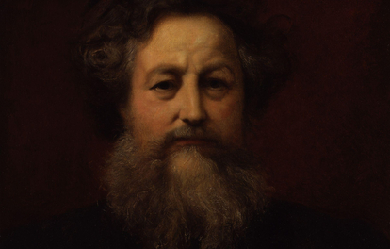
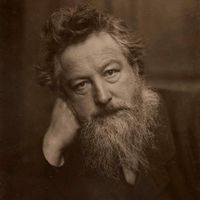
William Morris (24 March 1834– 3 October 1896) was an English textile designer, poet, novelist, translator, and socialist activist. Associated with the British Arts and Crafts Movement, he was a major contributor to the revival of traditional British textile arts and methods of production. His literary contributions helped to establish the modern fantasy genre, while he played a significant role in propagating the early socialist movement in Britain.
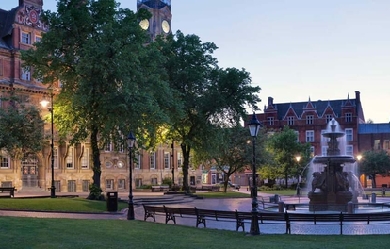
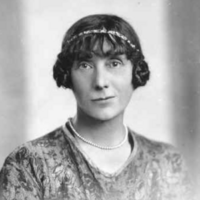
Jessie Pope (18 March 1868– 14 December 1941) was an English poet, writer and journalist, who remains best known for her patriotic motivational poems published during World War I. Wilfred Owen directed his 1917 poem Dulce et Decorum Est at Pope, whose literary reputation has faded into relative obscurity as those of war poets such as Owen and Siegfried Sassoon have grown. Early career Born in Leicester, she was educated at North London Collegiate School. She was a regular contributor to Punch, The Daily Mail and The Daily Express, also writing for Vanity Fair, Pall Mall Magazine and the Windsor. Prose editor A lesser-known literary contribution was Pope’s discovery of Robert Tressell’s novel The Ragged Trousered Philanthropists, when his daughter mentioned the manuscript to her after his death. Pope recommended it to her publisher, who commissioned her to abridge it before publication. This, a partial bowdlerisation, moulded it to a standard working-class tragedy while greatly downgrading its socialist political content. Verse Other works include Paper Pellets (1907), an anthology of humorous verse. She also wrote verses for children’s books, such as The Cat Scouts (Blackie, 1912) and the following eulogy to her friend, Bertram Fletcher Robinson (published in the Daily Express on Saturday 26 January 1907): Good Bye, kind heart; our benisons preceding, Shall shield your passing to the other side. The praise of your friends shall do your pleading In love and gratitude and tender pride. To you gay humorist and polished writer, We will not speak of tears or startled pain. You made our London merrier and brighter, God bless you, then, until we meet again! War poetry Pope’s war poetry was originally published in The Daily Mail; it encouraged enlistment and handed a white feather to youths who would not join the colours. Nowadays, this poetry is considered to be jingoistic, consisting of simple rhythms and rhyme schemes, with extensive use of rhetorical questions to persuade (and sometimes pressure) young men to join the war. This extract from Who’s for the Game? is typical in style: Who’s for the game, the biggest that’s played, The red crashing game of a fight? Who’ll grip and tackle the job unafraid? And who thinks he’d rather sit tight? Other poems, such as The Call (1915)– “Who’s for the trench– Are you, my laddie?”– expressed similar sentiments. Pope was widely published during the war, apart from newspaper publication producing three volumes: Jessie Pope’s War Poems (1915), More War Poems (1915) and Simple Rhymes for Stirring Times (1916). Criticism Her treatment of the subject is markedly in stark contrast to the anti-war stance of soldier poets such as Owen and Siegfried Sassoon. Many of these men found her work distasteful, Owen in particular. His poem Dulce et Decorum Est was a direct response to her writing, originally dedicated “To Jessie Pope etc.”. A later draft amended this as “To a certain Poetess”, later being removed completely to turn the poem into a general reproach on anyone sympathetic to the war. Pope is prominently remembered first for her pro-war poetry, but also as a representative of homefront female propagandists such as Mrs Humphry Ward, May Wedderburn Cannan, Emma Orczy, and entertainers such as Vesta Tilley. In particular, the poem “War Girls”, similar in structure to her pro-war poetry, states how "No longer caged and penned up/They’re going to keep their end up/Until the khaki soldier boys come marching back". Though largely unknown at the time, the War poets like Nichols, Sassoon and Owen, as well as later writers such as Edmund Blunden, Robert Graves, and Richard Aldington, have come to define the experience of the First World War. Reappraisal Pope’s work is today often presented in schools and anthologies as a counterpoint to the work of the War Poets, a comparison by which her pro-war work suffers both technically and politically. Some writers have attempted a partial re-appraisal of her work as an early pioneer of English women in the workforce, while still critical of both the content and artistic merit of her war poetry. Reminded that Pope was primarily a humourist and writer of light verse, her success in publishing and journalism during the pre-war era, when she was described as the “foremost woman humourist” of her day has been overshadowed by her propagandistic war poems. Her verse has been mined for sympathetic portrayals of the poor and powerless, of women urged to be strong and self-reliant. Her portrayal of the Suffragettes in a pair of counterpointed 1909 poems makes a case both for and against their actions. Later life After the war, Pope continued to rewrite, penning a short novel, poems—many of which continued to reflect upon the war and its aftermath—and books for children. She married a widower bank manager in 1929, when she was 61, and moved from London to Fritton, near Great Yarmouth. She died on 14 December 1941 in Devon.
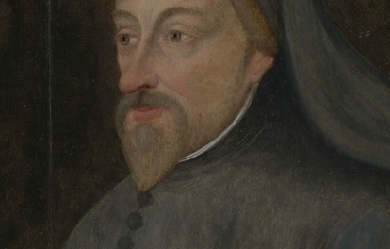

Geoffrey Chaucer (c. 1343 – 25 October 1400), known as the Father of English literature, is widely considered the greatest English poet of the Middle Ages and was the first poet to have been buried in Poet's Corner of Westminster Abbey. While he achieved fame during his lifetime as an author, philosopher, alchemist and astronomer, composing a scientific treatise on the astrolabe for his ten year-old son Lewis, Chaucer also maintained an active career in the civil service as a bureaucrat, courtier and diplomat. Among his many works, which include The Book of the Duchess, the House of Fame, the Legend of Good Women and Troilus and Criseyde, he is best known today for The Canterbury Tales. Chaucer is a crucial figure in developing the legitimacy of the vernacular, Middle English, at a time when the dominant literary languages in England were French and Latin. Geoffrey Chaucer was born in London sometime around 1343, though the precise date and location of his birth remain unknown. His father and grandfather were both London vintners; several previous generations had been merchants in Ipswich. (His family name derives from the French chausseur, meaning "shoemaker".)[1] In 1324 John Chaucer, Geoffrey's father, was kidnapped by an aunt in the hope of marrying the twelve-year-old boy to her daughter in an attempt to keep property in Ipswich. The aunt was imprisoned and the £250 fine levied suggests that the family was financially secure—bourgeois, if not elite.[2] John Chaucer married Agnes Copton, who, in 1349, inherited properties including 24 shops in London from her uncle, Hamo de Copton, who is described in a will dated 3 April 1354 and listed in the City Hustings Roll as "moneyer"; he was said to be moneyer at the Tower of London. In the City Hustings Roll 110, 5, Ric II, dated June 1380, Geoffrey Chaucer refers to himself as me Galfridum Chaucer, filium Johannis Chaucer, Vinetarii, Londonie' . While records concerning the lives of his contemporary poets, William Langland and the Pearl Poet are practically non-existent, since Chaucer was a public servant, his official life is very well documented, with nearly five hundred written items testifying to his career. The first of the "Chaucer Life Records" appears in 1357, in the household accounts of Elizabeth de Burgh, the Countess of Ulster, when he became the noblewoman's page through his father's connections.[3] She was married to Lionel, Duke of Clarence, the second surviving son of the king, Edward III, and the position brought the teenage Chaucer into the close court circle, where he was to remain for the rest of his life. He also worked as a courtier, a diplomat, and a civil servant, as well as working for the king, collecting and inventorying scrap metal. In 1359, in the early stages of the Hundred Years' War, Edward III invaded France and Chaucer travelled with Lionel of Antwerp, 1st Duke of Clarence, Elizabeth's husband, as part of the English army. In 1360, he was captured during the siege of Rheims. Edward paid £16 for his ransom, a considerable sum, and Chaucer was released. After this, Chaucer's life is uncertain, but he seems to have travelled in France, Spain, and Flanders, possibly as a messenger and perhaps even going on a pilgrimage to Santiago de Compostela. Around 1366, Chaucer married Philippa (de) Roet. She was a lady-in-waiting to Edward III's queen, Philippa of Hainault, and a sister of Katherine Swynford, who later (ca. 1396) became the third wife of John of Gaunt. It is uncertain how many children Chaucer and Philippa had, but three or four are most commonly cited. His son, Thomas Chaucer, had an illustrious career, as chief butler to four kings, envoy to France, and Speaker of the House of Commons. Thomas's daughter, Alice, married the Duke of Suffolk. Thomas's great-grandson (Geoffrey's great-great-grandson), John de la Pole, Earl of Lincoln, was the heir to the throne designated by Richard III before he was deposed. Geoffrey's other children probably included Elizabeth Chaucy, a nun at Barking Abbey. Agnes, an attendant at Henry IV's coronation; and another son, Lewis Chaucer. Chaucer’s “Treatise on the Astrolabe” was written for Lewis. Chaucer probably studied law in the Inner Temple (an Inn of Court) at this time. He became a member of the royal court of Edward III as a varlet de chambre, yeoman, or esquire on 20 June 1367, a position which could entail a wide variety of tasks. His wife also received a pension for court employment. He travelled abroad many times, at least some of them in his role as a valet. In 1368, he may have attended the wedding of Lionel of Antwerp to Violante Visconti, daughter of Galeazzo II Visconti, in Milan. Two other literary stars of the era were in attendance: Jean Froissart and Petrarch. Around this time, Chaucer is believed to have written The Book of the Duchess in honour of Blanche of Lancaster, the late wife of John of Gaunt, who died in 1369. Chaucer travelled to Picardy the next year as part of a military expedition; in 1373 he visited Genoa and Florence. Numerous scholars such as Skeat, Boitani, and Rowland suggested that, on this Italian trip, he came into contact with Petrarch or Boccaccio. They introduced him to medieval Italian poetry, the forms and stories of which he would use later. The purposes of a voyage in 1377 are mysterious, as details within the historical record conflict. Later documents suggest it was a mission, along with Jean Froissart, to arrange a marriage between the future King Richard II and a French princess, thereby ending the Hundred Years War. If this was the purpose of their trip, they seem to have been unsuccessful, as no wedding occurred. In 1378, Richard II sent Chaucer as an envoy (secret dispatch) to the Visconti and to Sir John Hawkwood, English condottiere (mercenary leader) in Milan. It has been speculated that it was Hawkwood on whom Chaucer based his character the Knight in the Canterbury Tales, for a description matches that of a fourteenth-century condottiere. A possible indication that his career as a writer was appreciated came when Edward III granted Chaucer "a gallon of wine daily for the rest of his life" for some unspecified task. This was an unusual grant, but given on a day of celebration, St George's Day, 1374, when artistic endeavours were traditionally rewarded, it is assumed to have been another early poetic work. It is not known which, if any, of Chaucer's extant works prompted the reward, but the suggestion of him as poet to a king places him as a precursor to later poets laureate. Chaucer continued to collect the liquid stipend until Richard II came to power, after which it was converted to a monetary grant on 18 April 1378. Chaucer obtained the very substantial job of Comptroller of the Customs for the port of London, which he began on 8 June 1374.[10] He must have been suited for the role as he continued in it for twelve years, a long time in such a post at that time. His life goes undocumented for much of the next ten years, but it is believed that he wrote (or began) most of his famous works during this period. He was mentioned in law papers of 4 May 1380, involved in the raptus of Cecilia Chaumpaigne. What raptus means is unclear, but the incident seems to have been resolved quickly and did not leave a stain on Chaucer's reputation. It is not known if Chaucer was in the city of London at the time of the Peasants' Revolt, but if he was, he would have seen its leaders pass almost directly under his apartment window at Aldgate. While still working as comptroller, Chaucer appears to have moved to Kent, being appointed as one of the commissioners of peace for Kent, at a time when French invasion was a possibility. He is thought to have started work on The Canterbury Tales in the early 1380s. He also became a Member of Parliament for Kent in 1386. There is no further reference after this date to Philippa, Chaucer's wife, and she is presumed to have died in 1387. He survived the political upheavals caused by the Lords Appellants, despite the fact that Chaucer knew some of the men executed over the affair quite well. On 12 July 1389, Chaucer was appointed the clerk of the king's works, a sort of foreman organising most of the king's building projects.[12] No major works were begun during his tenure, but he did conduct repairs on Westminster Palace, St. George's Chapel, Windsor, continue building the wharf at the Tower of London, and build the stands for a tournament held in 1390. It may have been a difficult job, but it paid well: two shillings a day, more than three times his salary as a comptroller. Chaucer was also appointed keeper of the lodge at the King’s park in Feckenham, which was a largely honorary appointment.[13] In September 1390, records say that he was robbed, and possibly injured, while conducting the business, and it was shortly after, on 17 June 1391, that he stopped working in this capacity. Almost immediately, on 22 June, he began as Deputy Forester in the royal forest of North Petherton, Somerset. This was no sinecure, with maintenance an important part of the job, although there were many opportunities to derive profit. He was granted an annual pension of twenty pounds by Richard II in 1394.[14] It is believed that Chaucer stopped work on the Canterbury Tales sometime towards the end of this decade. Not long after the overthrow of his patron, Richard II, in 1399, Chaucer's name fades from the historical record. The last few records of his life show his pension renewed by the new king, and his taking of a lease on a residence within the close of Westminster Abbey on 24 December 1399.[15] Although Henry IV renewed the grants assigned to Chaucer by Richard, Chaucer's own The Complaint of Chaucer to his Purse hints that the grants might not have been paid. The last mention of Chaucer is on 5 June 1400, when some monies owed to him were paid. He is believed to have died of unknown causes on 25 October 1400, but there is no firm evidence for this date, as it comes from the engraving on his tomb, erected more than one hundred years after his death. There is some speculation—most recently in Terry Jones' book Who Murdered Chaucer? : A Medieval Mystery—that he was murdered by enemies of Richard II or even on the orders of his successor Henry IV, but the case is entirely circumstantial. Chaucer was buried in Westminster Abbey in London, as was his right owing to his status as a tenant of the Abbey's close. In 1556, his remains were transferred to a more ornate tomb, making Chaucer the first writer interred in the area now known as Poets' Corner. Work Chaucer's first major work, The Book of the Duchess, was an elegy for Blanche of Lancaster (who died in 1369). It is possible that this work was commissioned by her husband John of Gaunt, as he granted Chaucer a £10 annuity on 13 June 1374. This would seem to place the writing of The Book of the Duchess between the years 1369 and 1374. Two other early works by Chaucer were Anelida and Arcite and The House of Fame. Chaucer wrote many of his major works in a prolific period when he held the job of customs comptroller for London (1374 to 1386). His Parlement of Foules, The Legend of Good Women and Troilus and Criseyde all date from this time. Also it is believed that he started work on The Canterbury Tales in the early 1380s. Chaucer is best known as the writer of The Canterbury Tales, which is a collection of stories told by fictional pilgrims on the road to the cathedral at Canterbury; these tales would help to shape English literature. The Canterbury Tales contrasts with other literature of the period in the naturalism of its narrative, the variety of stories the pilgrims tell and the varied characters who are engaged in the pilgrimage. Many of the stories narrated by the pilgrims seem to fit their individual characters and social standing, although some of the stories seem ill-fitting to their narrators, perhaps as a result of the incomplete state of the work. Chaucer drew on real life for his cast of pilgrims: the innkeeper shares the name of a contemporary keeper of an inn in Southwark, and real-life identities for the Wife of Bath, the Merchant, the Man of Law and the Student have been suggested. The many jobs that Chaucer held in medieval society—page, soldier, messenger, valet, bureaucrat, foreman and administrator—probably exposed him to many of the types of people he depicted in the Tales. He was able to shape their speech and satirise their manners in what was to become popular literature among people of the same types. Chaucer's works are sometimes grouped into first a French period, then an Italian period and finally an English period, with Chaucer being influenced by those countries' literatures in turn. Certainly Troilus and Criseyde is a middle period work with its reliance on the forms of Italian poetry, little known in England at the time, but to which Chaucer was probably exposed during his frequent trips abroad on court business. In addition, its use of a classical subject and its elaborate, courtly language sets it apart as one of his most complete and well-formed works. In Troilus and Criseyde Chaucer draws heavily on his source, Boccaccio, and on the late Latin philosopher Boethius. However, it is The Canterbury Tales, wherein he focuses on English subjects, with bawdy jokes and respected figures often being undercut with humour, that has cemented his reputation. Chaucer also translated such important works as Boethius' Consolation of Philosophy and The Romance of the Rose by Guillaume de Lorris (extended by Jean de Meun). However, while many scholars maintain that Chaucer did indeed translate part of the text of Roman de la Rose as The Romaunt of the Rose, others claim that this has been effectively disproved. Many of his other works were very loose translations of, or simply based on, works from continental Europe. It is in this role that Chaucer receives some of his earliest critical praise. Eustache Deschamps wrote a ballade on the great translator and called himself a "nettle in Chaucer's garden of poetry". In 1385 Thomas Usk made glowing mention of Chaucer, and John Gower, Chaucer's main poetic rival of the time, also lauded him. This reference was later edited out of Gower's Confessio Amantis and it has been suggested by some that this was because of ill feeling between them, but it is likely due simply to stylistic concerns. One other significant work of Chaucer's is his Treatise on the Astrolabe, possibly for his own son, that describes the form and use of that instrument in detail and is sometimes cited as the first example of technical writing in the English language. Although much of the text may have come from other sources, the treatise indicates that Chaucer was versed in science in addition to his literary talents. Another scientific work discovered in 1952, Equatorie of the Planetis, has similar language and handwriting compared to some considered to be Chaucer's and it continues many of the ideas from the Astrolabe. Furthermore, it contains an example of early European encryption.[16] The attribution of this work to Chaucer is still uncertain. Selected Works The Canterbury Tales Troilus and Criseyde Treatise on the Astrolabe The Legend of Good Women Parlement of Foules Anelida and Arcite The House of Fame The Book of the Duchess Roman de la Rose Translation of Boethius' Consolation of Philosophy (as Boece) References Wikipedia – http://en.wikipedia.org/wiki/Geoffrey_Chaucer
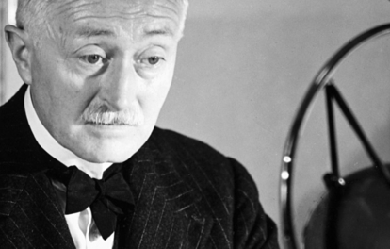
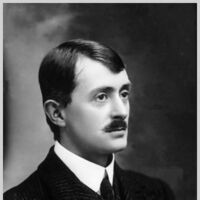
John Edward Masefield (1 June 1878 – 12 May 1967) was an English poet and writer, and Poet Laureate of the United Kingdom from 1930 until his death in 1967. He is remembered as the author of the classic children's novels The Midnight Folk and The Box of Delights, and poems, including "The Everlasting Mercy" and "Sea-Fever". Early life Masefield was born in Ledbury in Herefordshire, to Caroline and George Masefield, a solicitor. His mother died giving birth to his sister when Masefield was only six, and he went to live with his aunt. His father died soon after following a mental breakdown. After an unhappy education at the King's School in Warwick (now known as Warwick School), where he was a boarder between 1888 and 1891, he left to board the HMS Conway, both to train for a life at sea, and to break his addiction to reading, of which his aunt thought little. He spent several years aboard this ship and found that he could spend much of his time reading and writing. It was aboard the Conway that Masefield's love for story-telling grew. While on the ship, he listened to the stories told about sea lore. He continued to read, and felt that he was to become a writer and story teller himself. In 1894, Masefield boarded the Gilcruix, destined for Chile - this first voyage bringing him the experience of sea sickness. He recorded his experiences while sailing through the extreme weather, his journal entries reflecting a delight in seeing flying fish, porpoises, and birds, and was awed by the beauty of nature, including a rare sighting of a nocturnal rainbow on his voyage. On reaching Chile, Masefield suffered from sunstroke and was hospitalized. He eventually returned home to England as a passenger aboard a steam ship. In 1895, Masefield returned to sea on a windjammer destined for New York City. However, the urge to become a writer and the hopelessness of life as a sailor overtook him, and in New York, he deserted ship. He lived as a vagrant for several months, before returning to New York City, he did many odd jobs, finding work as an assistant to a bar keeper. Sometime around Christmas in 1895, Masefield read the December 1895 edition of Truth, a New York periodical, which contained the poem "The Piper of Arll" by Duncan Campbell Scott. Ten years later, Masefield wrote to Scott to tell him what reading that poem had meant to him: "I had never (till that time) cared very much for poetry, but your poem impressed me deeply, and set me on fire. Since then poetry has been the one deep influence in my life, and to my love of poetry I owe all my friends, and the position I now hold." For the next two years, Masefield was employed in a carpet factory, where long hours were expected and conditions were far from ideal. He purchased up to 20 books a week, and devoured both modern and classical literature. His interests at this time were diverse and his reading included works by George du Maurier, Dumas, Thomas Browne, Hazlitt, Dickens, Kipling, and R. L. Stevenson. Chaucer also became very important to him during this time, as well as poetry by Keats and Shelley. He eventually returned home to England in 1897 as a passenger aboard a steam ship. When Masefield was 23, he met his future wife, Constance Crommelin, who was 35. Educated in classics and English Literature, and a mathematics teacher, Constance was a match for Masefield despite the difference in age. The couple had two children (Judith, born in 1904, and Lewis, in 1910). By the time he was 24, Masefield's poems were being published in periodicals and his first collected works, Salt-Water Ballads (1902) was published, the poem "Sea-Fever" appearing in this book. Masefield then wrote the novels, Captain Margaret (1908) and Multitude and Solitude (1909). In 1911, after a long drought of poem writing, he composed "The Everlasting Mercy", the first of his narrative poems, and within the next year, Masefield had produced two more, "The Widow in the Bye Street" and "Dauber". As a result, Masefield became widely known to the public and was praised by critics, and in 1912, he was awarded the annual Edmond de Polignac prize. World War I to appointment as Poet Laureate When World War I began, though old enough to be exempted from military service, Masefield joined the staff of a British hospital for French soldiers, Hôpital Temporaire d'Arc-en-Barrois, Haute-Marne, France, serving briefly in 1915 as a hospital orderly, later publishing his own account of his experiences. After returning home, Masefield was invited to the United States on a three month lecture tour. Although Masefield's primary purpose was to lecture on English Literature, a secondary purpose was to collect information on the mood and views of Americans regarding the war in Europe. When he returned to England, he submitted a report to the British Foreign Office, and suggested that he be allowed to write a book about the failure of the allied efforts in the Dardanelles, which possibly could be used in the US in order to counter what he thought was German propaganda there. As a result, Masefield wrote Gallipoli. This work was a success, encouraging the British people, and lifting them somewhat from the disappointment they had felt as a result of the Allied losses in the Dardanelles. Due to the success of his wartime writings, Masefield met with the head of British Military Intelligence in France and was asked to write an account of the Battle of the Somme. Although Masefield had grand ideas for his book, he was denied access to the official records, and therefore, what was to be his preface to the book was published as "The Old Front Line", a description of the geography of the Somme area. In 1918, Masefield returned to America on his second lecture tour. Masefield spent much of his time speaking and lecturing to American soldiers waiting to be sent to Europe. These speaking engagements were very successful, and on one occasion, a battalion of all black soldiers danced and sang for him after his talk. During this tour, he matured as a public speaker and realized his ability to touch the emotions of his audience with his style of speaking, learning to speak publicly with his own heart, rather than from dry scripted speeches. Towards the end of his trip, both Yale and Harvard Universities conferred honorary Doctorates of Letters on him. Masefield entered the 1920s as an accomplished and respected writer. His family was able to settle on Boar's Hill, a somewhat rural setting not far from Oxford, and Masefield took up beekeeping, goat-herding and poultry-keeping. He continued to meet with success, the 1923 edition of "Collected Poems" selling approximately 80,000 copies. He produced three poems early in this decade. The first was Reynard The Fox, a poem that has been critically compared with works of Geoffrey Chaucer. This was followed by Right Royal and King Cole, poems where the relationship of humanity and nature emphasized. While Reynard is the best known of these, all met with acclaim. After King Cole Masefield turned away from the long poem and back to the novel, and from 1924 till the Second World War published twelve novels, which vary from stories of the sea (The Bird of Dawning, Victorious Troy) to social novels about modern England (The Hawbucks, The Square Peg), and from tales of an imaginary land in Central America (Sard Harker, Odtaa) to fantasies for children (The Midnight Folk, The Box of Delights). This variety in genre testifies most impressively to the breadth of his imagination, though it probably reduced his sales (which remained very respectable, however), since most readers of novels like knowing what to expect from their favourite authors. In this same period he wrote a large number of dramatic pieces. Most of these were based on Christian themes, and Masefield, to his amazement, encountered a ban on the performance of plays on biblical subjects that went back to the Reformation and had been revived a generation earlier to prevent production of Oscar Wilde's Salome. However, a compromise was reached, and in 1928 his "The Coming of Christ" was the first play to be performed in an English Cathedral since the Middle Ages. In 1921, Masefield received an Honorary Doctorate of Literature from Oxford University, and in 1923, organized the Oxford Recitations, an annual contest whose purpose was "to discover good speakers of verse and to encourage ‘the beautiful speaking of poetry.’" The Recitations were seen as a success given the numbers of contest applicants, the promotion of natural speech in poetical recitations, and the number of people learning how to listen to poetry. Masefield began to question however, whether the Recitations should continue as a contest, believing that the event should become more of a festival. In 1929, Masefield broke with the contest concept, and the Recitations came to an end. Later years and death In 1930, on the death of Robert Bridges, a new Poet Laureate was needed. Many felt that Rudyard Kipling was a likely choice, however, upon the recommendation of Prime Minister Ramsay MacDonald, King George V appointed Masefield, who remained in office until his death in 1967. The only person to hold the office for a longer period was Alfred, Lord Tennyson. On his appointment The Times newspaper said of him: ... his poetry could touch to beauty the plain speech of everyday life. Although the requirements of Poet Laureate had changed, and those in the office were rarely required to write verse for special occasions, Masefield took his appointment seriously and produced a large quantity of verse. Poems composed in his official capacity were sent to The Times. Masefield's modesty was shown by his inclusion of a stamped envelope with each submission so that his composition could be returned if it were found unacceptable for publication. Masefield was commissioned to write a poem to be set to music by the Master of the King's Musick, Sir Edward Elgar and performed at the unveiling of the Queen Alexandra Memorial by the King on 8 June 1932. This was the ode "So many true Princesses who have gone". After his appointment, Masefield was awarded the Order of Merit by King George V and many honorary degrees from British universities, in 1937 being elected as President of the Society of Authors. Masefield encouraged the continued development of English literature and poetry, and began the annual awarding of the Royal Medals for Poetry for a first or second published edition of poetry by a poet under the age of 35. Additionally, his speaking engagements were calling him further away, often on much longer tours, yet he still produced significant amounts of work in a wide variety of genres. To those he had already used he now added autobiography, producing New Chum, In the Mill, and So Long to Learn. Some critics judged Masefield to be an even finer writer of prose than of verse. It was not until about the age of 70 that Masefield slowed his pace due to illness. In 1960, Constance died at 93, after a long illness. Although her death was heartrending, he had spent a tiring year watching the woman he loved die. He continued his duties as Poet Laureate; In Glad Thanksgiving, his last book, was published when he was 88 years old. In late 1966, Masefield developed gangrene in his ankle. This spread to his leg, and he died of the infection on 12 May 1967. According to his wishes, he was cremated and his ashes placed in Poets’ Corner in Westminster Abbey. Later, the following verse was discovered, written by Masefield, addressed to his "Heirs, Administrators, and Assigns": Let no religious rite be done or read In any place for me when I am dead, But burn my body into ash, and scatter The ash in secret into running water, Or on the windy down, and let none see; And then thank God that there's an end of me. The Masefield Centre at Warwick School, which Masefield attended, and a high school in Ledbury, Herefordshire have been named in his honour. In 1977, Folkways Records released an album of his poetry, including some read by Masefield himself. Art song settings Many of Masefield's short poems were set as art songs by British composers of the time. Best known by far is John Ireland's "Sea Fever", the lasting popularity of which belies any mismatch between the urgency of the language and the slow, swung melody. Frederick Keel crafted several songs drawn from the Salt-Water Ballads and elsewhere. Of these, "Trade Winds" was particularly popular in its day, despite the tongue-twisting challenges the text presents to the singer. Keel's defiant setting of "Tomorrow", written while interned at Ruhleben during World War I, was frequently programmed at the BBC Proms after the war. Another memorable wartime composition is Ivor Gurney's climactic declamation of "By a bierside", a setting quickly set down in 1916 during a brief spell behind the lines. References Wikipedia - http://en.wikipedia.org/wiki/John_Masefield
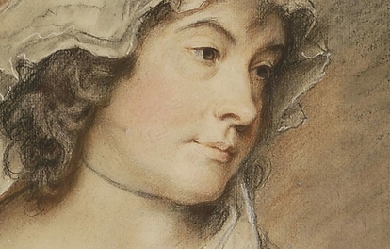
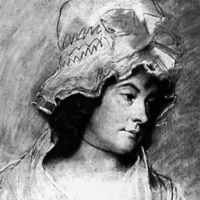
Charlotte Turner Smith (4 May 1749– 28 October 1806) was an English Romantic poet and novelist. She initiated a revival of the English sonnet, helped establish the conventions of Gothic fiction, and wrote political novels of sensibility. Smith was born into a wealthy family and received a typical education for a woman during the late 18th century. However, her father’s reckless spending forced her to marry early. In a marriage that she later described as prostitution, she was given by her father to the violent and profligate Benjamin Smith. Their marriage was deeply unhappy, although they had twelve children together. Charlotte joined Benjamin in debtor’s prison, where she wrote her first book of poetry, Elegiac Sonnets. Its success allowed her to help pay for Benjamin’s release. Benjamin’s father attempted to leave money to Charlotte and her children upon his death, but legal technicalities prevented her from ever acquiring it. Charlotte Smith eventually left Benjamin and began writing to support their children. Smith’s struggle to provide for her children and her frustrated attempts to gain legal protection as a woman provided themes for her poetry and novels; she included portraits of herself and her family in her novels as well as details about her life in her prefaces. Her early novels are exercises in aesthetic development, particularly of the Gothic and sentimentality. “The theme of her many sentimental and didactic novels was that of a badly married wife helped by a thoughtful sensible lover” (Smith’s entry in British Authors Before 1800: A Biographical Dictionary Ed. Stanley Kunitz and Howard Haycraft. New York: H.W. Wilson, 1952. pg. 478.) Her later novels, including The Old Manor House, often considered her best, support the ideals of the French Revolution. Smith was a successful writer, publishing ten novels, three books of poetry, four children’s books, and other assorted works, over the course of her career. She always saw herself as a poet first and foremost, however, as poetry was considered the most exalted form of literature at the time. Scholars credit Smith with transforming the sonnet into an expression of woeful sentiment that would pave the way for poets such as Coleridge, Wordsworth, Shelly and Keats. Smith’s poetry and prose was praised by contemporaries such as Romantic poets William Wordsworth and Samuel Taylor Coleridge as well as novelist Walter Scott. Coleridge, in 1796, even remarked that “those sonnets appear to me the most exquisite, in which moral Sentiments, Affections, or Feelings, are deduced from, and associated with the scenery of Nature”. After 1798, Smith’s popularity waned and by 1803 she was destitute and ill—she could barely hold a pen. She had to sell her books to pay off her debts. In 1806, Smith died. Largely forgotten by the middle of the 19th century, her works have now been republished and she is recognized as an important Romantic writer. Early life Smith was born on 4 May 1749 in London and baptized on 12 June; she was the oldest child of well-to-do Nicholas Turner and Anna Towers. Her two younger siblings, Nicholas and Catherine Ann, were born within the next five years. Smith’s childhood was shaped by her mother’s early death (probably in giving birth to Catherine) and her father’s reckless spending. After losing his wife, Nicholas Turner travelled and the children were raised by Lucy Towers, their maternal aunt (when exactly their father returned is unknown). At the age of six, Charlotte went to school in Chichester and took drawing lessons from the painter George Smith. Two years later, she, her aunt, and her sister moved to London and she attended a girls school in Kensington where she learned dancing, drawing, music, and acting. She loved to read and wrote poems, which her father encouraged. She even submitted a few to the Lady’s Magazine for publication, but they were not accepted. Marriage and first publication Smith’s father encountered financial difficulties upon his return to England and he was forced to sell some of the family’s holdings and to marry the wealthy Henrietta Meriton in 1765. Smith entered society at the age of twelve, leaving school and being tutored at home. On 23 February 1765, at the age of fifteen, she married Benjamin Smith, the son of Richard Smith, a wealthy West Indian merchant and a director of the East India Company. The proposal was accepted for her by her father; forty years later, Smith condemned her father’s action, which she wrote had turned her into a “legal prostitute”. Smith’s marriage was unhappy. She detested living in commercial Cheapside (the family later moved to Southgate and Tottenham) and argued with her in-laws, who she believed were unrefined and uneducated. They, in turn, mocked her for spending time reading, writing, and drawing. Even worse, Benjamin proved to be violent, unfaithful, and profligate. Only her father-in-law, Richard, appreciated her writing abilities, although he wanted her to use them to further his business interests. Richard Smith owned plantations in Barbados and he and his second wife brought five slaves to England, who, along with their descendants, were included as part of the family property in his will. Although Charlotte Smith later argued against slavery in works such as The Old Manor House (1793) and “Beachy Head”, she herself benefited from the income and slave labor of Richard Smith’s plantations. In 1766, Charlotte and Benjamin had their first child, who died the next year just days after the birth of their second, Benjamin Berney (1767–77). Between 1767 and 1785, the couple had ten more children: William Towers (born 1768), Charlotte Mary (born c. 1769), Braithwaite (born 1770), Nicholas Hankey (1771–1837), Married Anni Petroose (1779–1843), Charles Dyer (born 1773), Anna Augusta (1774–94), Lucy Eleanor (born 1776), Lionel (1778–1842), Harriet (born c. 1782), and George (born c. 1785). Only six of Smith’s children survived her. Smith assisted in the family business that her husband had abandoned by helping Richard Smith with his correspondence. She persuaded Richard to set Benjamin up as a gentleman farmer in Hampshire and lived with him at Lys Farm from 1774 until 1783. Worried about Charlotte’s future and that of his grandchildren and concerned that his son would continue his irresponsible ways, Richard Smith willed the majority of his property to Charlotte’s children. However, because he had drawn up the will himself, the documents contained legal problems. The inheritance, originally worth nearly £36,000, was tied up in chancery after his death in 1776 for almost forty years. Smith and her children saw little of it. (It has been proposed that this real case may have inspired the famous fictional case of Jarndyce and Jarndyce, in Dickens’s Bleak House.) In fact, Benjamin illegally spent at least a third of the legacy and ended up in King’s Bench Prison in December 1783. Smith moved in with him and it was in this environment that she wrote and published her first work, Elegiac Sonnets (1784). Elegiac Sonnets achieved instant success, allowing Charlotte to pay for their release from prison. Smith’s sonnets helped initiate a revival of the form and granted an aura of respectability to her later novels (poetry was considered the highest art form at the time). Smith revised Elegiac Poems several times over the years, eventually creating a two-volume work. Novelist After Benjamin Smith was released from prison, the entire family moved to Dieppe, France to avoid further creditors. Charlotte returned to negotiate with them, but failed to come to an agreement. She went back to France and in 1784 began translating works from French into English. In 1787 she published The Romance of Real Life, consisting of translated selections from François Gayot de Pitaval’s trials. She was forced to withdraw her other translation, Manon Lescaut, after it was argued that the work was immoral and plagiarized. In 1786, she published it anonymously. In 1785, the family returned to England and moved to Woolbeding House near Midhurst, Sussex. Smith’s relationship with her husband did not improve and on 15 April 1787, after twenty-two years of marriage, she left him. She wrote that she might “have been contented to reside in the same house with him”, had not “his temper been so capricious and often so cruel” that her “life was not safe”. When Charlotte left Benjamin, she did not secure a legal agreement that would protect her profits—he would have access to them under English primogeniture laws. Smith knew that her children’s future rested on a successful settlement of the lawsuit over her father-in-law’s will, therefore she made every effort to earn enough money to fund the suit and retain the family’s genteel status. Smith claimed the position of gentlewoman, signing herself “Charlotte Smith of Bignor Park” on the title page of Elegiac Sonnets. All of her works were published under her own name, “a daring decision” for a woman at the time. Her success as a poet allowed her to make this choice. Throughout her career, Smith identified herself as a poet. Although she published far more prose than poetry and her novels brought her more money and fame, she believed poetry would bring her respectability. As Sarah Zimmerman claimed in the Oxford Dictionary of National Biography, “She prized her verse for the role it gave her as a private woman whose sorrows were submitted only reluctantly to the public.” After separating from her husband, Smith moved to a town near Chichester and decided to write novels, as they would make her more money than poetry. Her first novel, Emmeline (1788), was a success, selling 1500 copies within months. She wrote nine more novels in the next ten years: Ethelinde (1789), Celestina (1791), Desmond (1792), The Old Manor House (1793), The Wanderings of Warwick (1794), The Banished Man (1794), Montalbert (1795), Marchmont (1796), and The Young Philosopher (1798). Smith began her career as a novelist during the 1780s at a time when women’s fiction was expected to focus on romance and to foreground “a chaste and flawless heroine subjected to repeated melodramatic distresses until reinstated in society by the virtuous hero”. Although Smith’s novels employed this structure, they also incorporated political commentary, particularly support of the French Revolution, through the voices of male characters. At times, she challenged the typical romance plot by including “narratives of female desire” or “tales of females suffering despotism”. Smith’s novels contributed to the development of Gothic fiction and the novel of sensibility. Smith’s novels are autobiographical. While a common device at the time, Antje Blank writes in The Literary Encyclopedia, “few exploited fiction’s potential of self-representation with such determination as Smith”. For example, Mr. and Mrs. Stafford in Emmeline are portraits of Charlotte and Benjamin. The prefaces to Smith’s novels told the story of her own struggles, including the deaths of several of her children. According to Zimmerman, "Smith mourned most publicly for her daughter Anna Augusta, who married an émigré... and died aged twenty in 1795." Smith’s prefaces positioned her as both a suffering sentimental heroine as well as a vocal critic of the laws that kept her and her children in poverty. Smith’s experiences prompted her to argue for legal reforms that would grant women more rights, making the case for these reforms through her novels. Smith’s stories showed the “legal, economic, and sexual exploitation” of women by marriage and property laws. Initially readers were swayed by her arguments and writers such as William Cowper patronized her. However, as the years passed, readers became exhausted by Smith’s stories of struggle and inequality. Public opinion shifted towards the view of poet Anna Seward, who argued that Smith was “vain” and “indelicate” for exposing her husband to “public contempt”. Smith moved frequently due to financial concerns and declining health. During the last twenty years of her life, she lived in: Chichester, Brighton, Storrington, Bath, Exmouth, Weymouth, Oxford, London, Frant, and Elstead. She eventually settled at Tilford, Surrey. Smith became involved with English radicals while she was living in Brighton from 1791 to 1793. Like them, she supported the French Revolution and its republican principles. Her epistolary novel Desmond tells the story of a man who journeys to revolutionary France and is convinced of the rightness of the revolution and contends that England should be reformed as well. The novel was published in June 1792, a year before France and England went to war and before the Reign of Terror began, which shocked the British public, turning them against the revolutionaries. Like many radicals, Smith criticized the French, but she still endorsed the original ideals of the revolution. In order to support her family, Smith had to sell her works, thus she was eventually forced to, as Blank claims, “tone down the radicalism that had characterised the authorial voice in Desmond and adopt more oblique techniques to express her libertarian ideals”. She therefore set her next novel, The Old Manor House (1793), during the American Revolutionary War, which allowed her to discuss democratic reform without directly addressing the French situation. However, in her last novel, The Young Philosopher (1798), Smith wrote a final piece of “outspoken radical fiction”. Smith’s protagonist leaves Britain for America, as there is no hope for a reform in Britain. The Old Manor House is "frequently deemed [Smith’s] best" novel for its sentimental themes and development of minor characters. Novelist Walter Scott labeled it as such and poet and critic Anna Laetitia Barbauld chose it for her anthology of The British Novelists (1810). As a successful novelist and poet, Smith communicated with famous artists and thinkers of the day, including musician Charles Burney (father of Frances Burney), poet Samuel Taylor Coleridge, scientist and poet Erasmus Darwin, lawyer and radical Thomas Erskine, novelist Mary Hays, playwright Richard Brinsley Sheridan, and poet Robert Southey. A wide array of periodicals reviewed her works, including the Anti-Jacobin Review, the Analytical Review, the British Critic, The Critical Review, the European Magazine, the Gentleman’s Magazine, the Monthly Magazine, and the Universal Magazine. Smith earned the most money between 1787 and 1798, after which she was no longer as popular; several reasons have been suggested for the public’s declining interest in Smith, including “a corresponding erosion of the quality of her work after so many years of literary labour, an eventual waning of readerly interest as she published, on average, one work per year for twenty-two years, and a controversy that attached to her public profile” as she wrote about the French revolution. Both radical and conservative periodicals criticized her novels about the revolution. Her insistence on pursuing the lawsuit over Richard Smith’s inheritance lost her several patrons. Also, her increasingly blunt prefaces made her less appealing to the public. In order to continue earning money, Smith began writing in less politically charged genres. She published a collection of tales, Letters of a Solitary Wanderer (1801–02) and the play What Is She? (1799, attributed). Her most successful new foray was into children’s literature: Rural Walks (1795), Rambles Farther (1796), Minor Morals (1798), and Conversations Introducing Poetry (1804). She also wrote two volumes of a history of England (1806) and A Natural History of Birds (1807, posthumous). She also returned to writing poetry and Beachy Head and Other Poems (1807) was published posthumously. Publishers did not pay as much for these works, however, and by 1803, Smith was poverty-stricken. She could barely afford food and had no coal. She even sold her beloved library of 500 books in order to pay off debts, but feared being sent to jail for the remaining £20. Illness and death Smith complained of gout for many years (it was probably rheumatoid arthritis), which made it increasingly difficult and painful for her to write. By the end of her life, it had almost paralyzed her. She wrote to a friend that she was “literally vegetating, for I have very little locomotive powers beyond those that appertain to a cauliflower”. On 23 February 1806, her husband died in a debtors’ prison and Smith finally received some of the money he owed her, but she was too ill to do anything with it. She died a few months later, on 28 October 1806, at Tilford and was buried at Stoke Church, Stoke Park, near Guildford. The lawsuit over her father-in-law’s estate was settled seven years later, on 22 April 1813, more than thirty-six years after Richard Smith’s death. Legacy Stuart Curran, the editor of Smith’s poems, has written that Smith is “the first poet in England whom in retrospect we would call Romantic”. She helped shape the “patterns of thought and conventions of style” for the period. Romantic poet William Wordsworth was the most affected by her works. He said of Smith in the 1830s that she was “a lady to whom English verse is under greater obligations than are likely to be either acknowledged or remembered”. By the second half of the 19th century, Smith was largely forgotten. Smith’s novels were republished again at the end of the 20th century, and “critics interested in the period’s women poets and prose writers, the Gothic novel, the historical novel, the social problem novel, and post-colonial studies” have argued for her significance as a writer. They looked to the contemporary documentation of her importance, discovering that she helped to revitalize the English sonnet, a fact recognized by Coleridge and others. Scott wrote that she “preserves in her landscapes the truth and precision of a painter” and poet and Barbauld claimed that Smith was the first to include sustained natural description in novels. It was not until 2008 however, that Smith’s entire prose collection became available to the general public. The edition contains each novel, the children’s stories and rural walks.
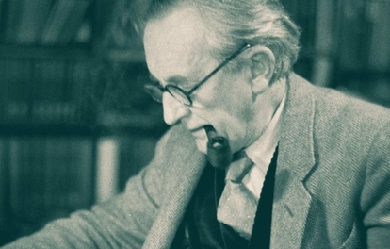
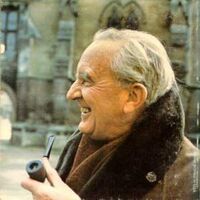
John Ronald Reuel Tolkien, 3 January 1892 – 2 September 1973) was an English writer, poet, philologist, and university professor who is best known as the author of the classic high-fantasy works The Hobbit, The Lord of the Rings, and The Silmarillion. He served as the Rawlinson and Bosworth Professor of Anglo-Saxon and Fellow of Pembroke College, Oxford, from 1925 to 1945 and Merton Professor of English Language and Literature and Fellow of Merton College, Oxford from 1945 to 1959.[1] He was at one time a close friend of C. S. Lewis—they were both members of the informal literary discussion group known as the Inklings. Tolkien was appointed a Commander of the Order of the British Empire by Queen Elizabeth II on 28 March 1972. After Tolkien's death, his son Christopher published a series of works based on his father's extensive notes and unpublished manuscripts, including The Silmarillion. These, together with The Hobbit and The Lord of the Rings form a connected body of tales, poems, fictional histories, invented languages, and literary essays about a fantasy world called Arda, and Middle-earth within it. Between 1951 and 1955, Tolkien applied the term legendarium to the larger part of these writings. While many other authors had published works of fantasy before Tolkien,[3] the great success of The Hobbit and The Lord of the Rings led directly to a popular resurgence of the genre. This has caused Tolkien to be popularly identified as the "father" of modern fantasy literature—or, more precisely, of high fantasy. In 2008, The Times ranked him sixth on a list of "The 50 greatest British writers since 1945". Forbes ranked him the 5th top-earning "dead celebrity" in 2009. Family origins Tolkien's paternal ancestors were middle-class craftsmen who made and sold clocks, watches and pianos in London and Birmingham. The Tolkien family had emigrated from Germany in the 18th century but had become "quickly intensely English". Stories told by his aunt, Grace Tolkien, claimed a relation with the House of Hohenzollern. "More prosaic" members of the family said that the Tolkiens had arrived in England in 1756, as refugees from Frederick the Great's invasion of the Electorate of Saxony during the Seven Years' War. Tolkien derived his surname from the German word tollkühn, meaning "foolhardy". Several families with the surname Tolkien or other spelling variants live in northwestern Germany, mainly in Lower Saxony and Hamburg. A German writer has suggested that the name is more likely to derive from the village Tolkynen, near Rastenburg, East Prussia (now in north-eastern Poland), although that village is far from Lower Saxony; its name is derived from the now-extinct Old Prussian language. Childhood John Ronald Reuel Tolkien was born on 3 January 1892 in Bloemfontein in the Orange Free State (now Free State Province in South Africa) to Arthur Reuel Tolkien (1857–1896), an English bank manager, and his wife Mabel, née Suffield (1870–1904). The couple had left England when Arthur was promoted to head the Bloemfontein office of the British bank for which he worked. Tolkien had one sibling, his younger brother, Hilary Arthur Reuel, who was born on 17 February 1894. As a child, he was bitten by a large baboon spider in the garden, an event some think later echoed in his stories, although Tolkien admitted no actual memory of the event and no special hatred of spiders as an adult. In another incident, a young family servant, who thought Tolkien a beautiful child, took the baby to his kraal to show him off, returning him the next morning. When he was three, he went to England with his mother and brother on what was intended to be a lengthy family visit. His father, however, died in South Africa of rheumatic fever before he could join them. This left the family without an income, so Tolkien's mother took him to live with her parents in Kings Heath, Birmingham. Soon after, in 1896, they moved to Sarehole (now in Hall Green), then a Worcestershire village, later annexed to Birmingham. He enjoyed exploring Sarehole Mill and Moseley Bog and the Clent, Lickey and Malvern Hills, which would later inspire scenes in his books, along with nearby towns and villages such as Bromsgrove, Alcester, and Alvechurch and places such as his aunt Jane's farm of Bag End, the name of which he used in his fiction. Mabel Tolkien taught her two children at home. Ronald, as he was known in the family, was a keen pupil. She taught him a great deal of botany and awakened in him the enjoyment of the look and feel of plants. Young Tolkien liked to draw landscapes and trees, but his favourite lessons were those concerning languages, and his mother taught him the rudiments of Latin very early. He could read by the age of four and could write fluently soon afterwards. His mother allowed him to read many books. He disliked Treasure Island and The Pied Piper and thought Alice's Adventures in Wonderland by Lewis Carroll was "amusing but disturbing". He liked stories about "Red Indians" and the fantasy works by George MacDonald. In addition, the "Fairy Books" of Andrew Lang were particularly important to him and their influence is apparent in some of his later writings. Mabel Tolkien was received into the Roman Catholic Church in 1900 despite vehement protests by her Baptist family, which stopped all financial assistance to her. In 1904, when J.R.R. Tolkien was 12, his mother died of acute diabetes at Fern Cottage in Rednal, which she was renting. She was then about 34 years of age, about as old as a person with diabetes mellitus type 1 could live without treatment — insulin would not be discovered until two decades later. Nine years after her death, Tolkien wrote, "My own dear mother was a martyr indeed, and it is not to everybody that God grants so easy a way to his great gifts as he did to Hilary and myself, giving us a mother who killed herself with labour and trouble to ensure us keeping the faith." Prior to her death, Mabel Tolkien had assigned the guardianship of her sons to her close friend, Fr. Francis Xavier Morgan of the Birmingham Oratory, who was assigned to bring them up as good Catholics. In a 1965 letter to his son Michael, Tolkien recalled the influence of the man whom he always called "Father Francis" : "He was an upper-class Welsh-Spaniard Tory, and seemed to some just a pottering old gossip. He was—and he was not. I first learned charity and forgiveness from him; and in the light of it pierced even the 'liberal' darkness out of which I came, knowing more [i.e. Tolkien having grown up knowing more] about 'Bloody Mary' than the Mother of Jesus—who was never mentioned except as an object of wicked worship by the Romanists." After his mother's death, Tolkien grew up in the Edgbaston area of Birmingham and attended King Edward's School, Birmingham, and later St. Philip's School. In 1903, he won a Foundation Scholarship and returned to King Edward's. While a pupil there, Tolkien was one of the cadets from the school's Officers Training Corps who helped "line the route" for the 1910 coronation parade of King George V. Like the other cadets from King Edward's, Tolkien was posted just outside the gates of Buckingham Palace. In Edgbaston, Tolkien lived there in the shadow of Perrott's Folly and the Victorian tower of Edgbaston Waterworks, which may have influenced the images of the dark towers within his works.[31][32] Another strong influence was the romantic medievalist paintings of Edward Burne-Jones and the Pre-Raphaelite Brotherhood; the Birmingham Museum and Art Gallery had a large collection of works on public display. Youth While in his early teens, Tolkien had his first encounter with a constructed language, Animalic, an invention of his cousins, Mary and Marjorie Incledon. At that time, he was studying Latin and Anglo-Saxon. Interest in the language soon died away, but Mary and others, including Tolkien himself, invented a new and more complex language called Nevbosh. The next constructed language he came to work with, Naffarin, would be his own creation. In 1911, while they were at King Edward's School, Birmingham, Tolkien and three friends, Rob Gilson, Geoffrey Bache Smith and Christopher Wiseman, formed a semi-secret society they called the T.C.B.S. The initials stood for Tea Club and Barrovian Society, alluding to their fondness for drinking tea in Barrow's Stores near the school and, secretly, in the school library. After leaving school, the members stayed in touch and, in December 1914, they held a "council" in London at Wiseman's home. For Tolkien, the result of this meeting was a strong dedication to writing poetry. In 1911, Tolkien went on a summer holiday in Switzerland, a trip that he recollects vividly in a 1968 letter, noting that Bilbo's journey across the Misty Mountains ("including the glissade down the slithering stones into the pine woods") is directly based on his adventures as their party of 12 hiked from Interlaken to Lauterbrunnen and on to camp in the moraines beyond Mürren. Fifty-seven years later, Tolkien remembered his regret at leaving the view of the eternal snows of Jungfrau and Silberhorn ("the Silvertine (Celebdil) of my dreams"). They went across the Kleine Scheidegg to Grindelwald and on across the Grosse Scheidegg to Meiringen. They continued across the Grimsel Pass, through the upper Valais to Brig and on to the Aletsch glacier and Zermatt. In October of the same year, Tolkien began studying at Exeter College, Oxford. He initially studied Classics but changed his course in 1913 to English Language and Literature, graduating in 1915 with first-class honours in his final examinations. Family The Tolkiens had four children: John Francis Reuel Tolkien (17 November 1917 – 22 January 2003), Michael Hilary Reuel Tolkien (22 October 1920 – 27 February 1984), Christopher John Reuel Tolkien (born 21 November 1924) and Priscilla Mary Anne Reuel Tolkien (born 18 June 1929). Tolkien was very devoted to his children and sent them illustrated letters from Father Christmas when they were young. Each year more characters were added, such as the North Polar Bear (Father Christmas's helper), the Snow Man (his gardener), Ilbereth the elf (his secretary), and various other, minor characters. The major characters would relate tales of Father Christmas's battles against goblins who rode on bats and the various pranks committed by the North Polar Bear. References Wikipedia—http://en.wikipedia.org/wiki/J._R._R._Tolkien
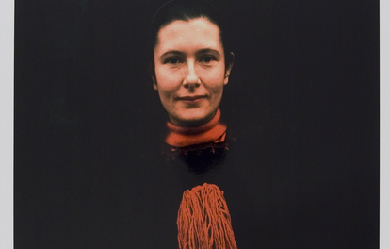
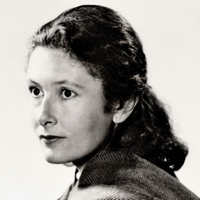
Denise Levertov (24 October 1923– 20 December 1997) was a British-born American poet. Levertov, who was educated at home, showed an enthusiasm for writing from an early age and studied ballet, art, piano and French as well as standard subjects. She wrote about the strangeness she felt growing up part Jewish, German, Welsh and English, but not fully belonging to any of these identities. She notes that it lent her a sense of being special rather than excluded: “I knew before I was ten that I was an artist-person and I had a destiny”.

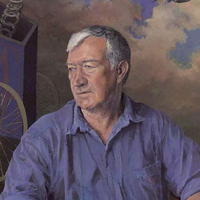
Adrian Mitchell (24 October 1932– 20 December 2008) was an English poet, novelist and playwright. A former journalist, he became a noted figure on the British Left. For almost half a century he was the foremost poet of the country’s anti-Bomb movement. The critic Kenneth Tynan called him “the British Mayakovsky”. Mitchell sought in his work to counteract the implications of his own assertion that, “Most people ignore most poetry because most poetry ignores most people.” In a National Poetry Day poll in 2005 his poem “Human Beings” was voted the one most people would like to see launched into space. In 2002 he was nominated, semi-seriously, Britain’s “Shadow Poet Laureate”. Mitchell was for some years poetry editor of the New Statesman, and was the first to publish an interview with the Beatles. His work for the Royal Shakespeare Company included Peter Brook’s US and the English version of Peter Weiss’s Marat/Sade. Ever inspired by the example of his own favourite poet and precursor William Blake, about whom he wrote the acclaimed Tyger for the National Theatre, his often angry output swirled from anarchistic anti-war satire, through love poetry to, increasingly, stories and poems for children. He also wrote librettos. The Poetry Archive identified his creative yield as hugely prolific. The Times said that Mitchell’s had been a “forthright voice often laced with tenderness.” His poems on such topics as nuclear war, Vietnam, prisons and racism had become “part of the folklore of the Left. His work was often read and sung at demonstrations and rallies.” Biography Early life and career Adrian Mitchell was born near Hampstead Heath, North London. His mother, Kathleen Fabian, was a Fröbel-trained nursery school teacher and his father, Jock Mitchell, a research chemist from Cupar in Fife. He was educated at Monkton Combe School in Bath. He then went to Greenways School, at Ashton Gifford House in Wiltshire, run at the time by a friend of his mother. This, said Mitchell, was “a school in Heaven, where my first play, The Animals’ Brains Trust, was staged when I was nine to my great satisfaction.” His schooling was completed as a boarder at Dauntsey’s School, after which he did his National Service in the RAF. He commented that this “confirmed (his) natural pacificism”. He went on to study English at Christ Church, Oxford, where he was taught by J. R. R. Tolkien’s son. He became chairman of the university’s poetry society and the literary editor of Isis magazine. On graduating Mitchell got a job as a reporter on the Oxford Mail and, later, at the Evening Standard in London. “Inheriting enough money to live on for a year, I wrote my first novel and my first TV play. Soon afterwards I became a freelance journalist, writing about pop music for the Daily Mail and TV for the pre-tabloid Sun and the Sunday Times. I quit journalism in the mid-Sixties and since then have been a free-falling poet, playwright and writer of stories.” Career Mitchell gave frequent public readings, particularly for left-wing causes. Satire was his speciality. Commissioned to write a poem about Prince Charles and his special relationship (as Prince of Wales) with the people of Wales, his measured response was short and to the point: “Royalty is a neurosis. Get well soon.” In “Loose Leaf Poem”, from Ride the Nightmare, he wrote: My brain socialist My heart anarchist My eyes pacifist My blood revolutionary Mitchell was in the habit of stipulating in any preface to his collections: “None of the work in this book is to be used in connection with any examination whatsoever.” His best-known poem, “To Whom It May Concern”, was his bitterly sarcastic reaction to the televised horrors of the Vietnam War. The poem begins: I was run over by the truth one day. Ever since the accident I’ve walked this way So stick my legs in plaster Tell me lies about Vietnam He first read it to thousands of nuclear disarmament protesters who, having marched through central London on CND’s first new format one-day Easter March, finally crammed into Trafalgar Square on the afternoon of Easter Day 1964. As Mitchell delivered his lines from the pavement in front of the National Gallery, angry demonstrators in the square below scuffled with police. In 1972 he confronted then-prime minister Edward Heath about germ warfare and the war in Northern Ireland. He was later responsible for the well-respected stage adaptation of The Lion, the Witch and the Wardrobe, a production of the Royal Shakespeare Company that premiered in November 1998. Over the years he updated the poem to take into account recent events. “He never let up. Most calls—'Can you do this one, Adrian?'—were answered, 'Sure, I’ll be there.' His reading of 'Tell Me Lies’ at a City Hall benefit just before the 2003 invasion of Iraq was electrifying. Of course, he couldn’t stop that war, but he performed as if he could.” One Remembrance Sunday he laid the Peace Pledge Union’s White Poppy wreath on the Cenotaph in Whitehall. On one International Conscientious Objectors’ Day he read a poem at the ceremony at the Conscientious Objectors Commemorative Stone in Tavistock Square in London. Fellow writers could be effusive in their tributes. John Berger said that, “Against the present British state he opposes a kind of revolutionary populism, bawdiness, wit and the tenderness sometimes to be found between animals.” Angela Carter once wrote that he was “a joyous, acrid and demotic tumbling lyricist Pied Piper, determinedly singing us away from catastrophe.” Ted Hughes: “In the world of verse for children, nobody has produced more surprising verse or more genuinely inspired fun than Adrian Mitchell.” Mitchell died at the age of 76 in a North London hospital from a suspected heart attack. For two months he had been suffering from pneumonia. Two days earlier he had completed what turned out to be his last poem, “My Literary Career So Far”. He intended it as a Christmas gift to “all the friends, family and animals he loved”. “Adrian”, said fellow-poet Michael Rosen, “was a socialist and a pacifist who believed, like William Blake, that everything human was holy. That’s to say he celebrated a love of life with the same fervour that he attacked those who crushed life. He did this through his poetry, his plays, his song lyrics and his own performances. Through this huge body of work, he was able to raise the spirits of his audiences, in turn exciting, inspiring, saddening and enthusing them.... He has sung, chanted, whispered and shouted his poems in every kind of place imaginable, urging us to love our lives, love our minds and bodies and to fight against tyranny, oppression and exploitation.” In 2009 Frances Lincoln Children’s Books published an adaptation of Ovid: Shapeshifters: tales from Ovid’s Metamorphoses, written by Mitchell and illustrated by Alan Lee. Family Mitchell is survived by his wife, the actress Celia Hewitt, whose bookshop, Ripping Yarns, is in Highgate, and their two daughters Sasha and Beattie. He also has two sons and a daughter from his previous marriage to Maureen Bush: Briony, Alistair and Danny. There are nine grandchildren: Robin, Arthur, Charlotte, Natasha, Zoe, Caitlin, Annie, Lola and Lilly. Selected bibliography * If You See Me Comin′ (Jonathan Cape, 1962) * Poems (Jonathan Cape, 1964; 978-0224608732) * Out Loud (Cape Goliard, 1968) * Ride the Nightmare (Cape, 1971; ISBN 978-0224005630) * Tyger: A Celebration Based on the Life and Works of William Blake (Cape, 1971; ISBN 978-0224006521) * The Apeman Cometh (Cape, 1975; ISBN 978-0224011471) * Man Friday, novel (Futura, 1975; ISBN 978-0860072744) * For Beauty Douglas: Collected Poems 1953–79, illus. Ralph Steadman (Allison & Busby, 1981; ISBN 978-0850313994) * On the Beach at Cambridge: New Poems (Allison and Busby, 1984; ISBN 978-0850315639) * Nothingmas Day, illus. John Lawrence (Allison & Busby, 1984; ISBN 978-0850315325) * Love Songs of World War Three: Collected Stage Lyrics (Allison and Busby, 1988; ISBN 978-0850319910) * All My Own Stuff, illus. Frances Lloyd (Simon & Schuster, 1991; ISBN 978-0750004466) * Adrian Mitchell’s Greatest Hits– The Top Forty, illus. Ralph Steadman (Bloodaxe Books, 1991; ISBN 978-1852241643) * Blue Coffee: Poems 1985–1996 (Bloodaxe, 1996; 1997 reprint, ISBN 978-1852243623) * Heart on the Left: Poems 1953–1984 (Bloodaxe, 1997; ISBN 978-1852244255) * Balloon Lagoon and Other Magic Islands of Poetry, illus. Tony Ross (Orchard Books, 1997; ISBN 978-1860396595) * Nobody Rides the Unicorn, illus. Stephen Lambert (Corgi Children’s, new edn 2000; ISBN 978-0552546171) * All Shook Up: Poems 1997–2000 (Bloodaxe, 2000; ISBN 978-1852245139) * The Shadow Knows: Poems 2001–2004 (Bloodaxe, 2004) * Tell Me Lies: Poems 2005–2008, illus. Ralph Steadman (Bloodaxe, 2009; ISBN 978-1852248437) * Umpteen Pockets, illus. Tony Ross (Orchard Books, 2009; ISBN 978-1408303634) * Daft as a Doughnut (Orchard Books, 2009; ISBN 978-1408308073) * Shapeshifters: Tales from Ovid’s Metamorphoses, illus. Alan Lee (Frances Lincoln, 2009; ISBN 978-1845075361) * Come on Everybody: Poems 1953–2008 (Bloodaxe, 2012; ISBN 978-1852249465) Awards * * 1961 Eric Gregory Award * 1966 PEN Translation Prize * 1971 Tokyo Festival Television Film Award * 2005 CLPE Poetry Award (shortlist) for Daft as a Doughnut References Wikipedia—https://en.wikipedia.org/wiki/Adrian_Mitchell
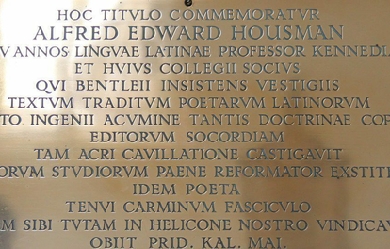
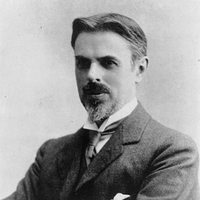
Alfred Edward Housman was born in Fockbury, Worcestershire, England, on March 26, 1859, the eldest of seven children. A year after his birth, Housman’s family moved to nearby Bromsgrove, where the poet grew up and had his early education. In 1877, he attended St. John’s College, Oxford and received first class honours in classical moderations. Housman became distracted, however, when he fell in love with his heterosexual roommate Moses Jackson. He unexpectedly failed his final exams, but managed to pass the final year and later took a position as clerk in the Patent Office in London for ten years. During this time he studied Greek and Roman classics intensively, and in 1892 was appointed professor of Latin at University College, London. In 1911 he became professor of Latin at Trinity College, Cambridge, a post he held until his death. As a classicist, Housman gained renown for his editions of the Roman poets Juvenal, Lucan, and Manilius, as well as his meticulous and intelligent commentaries and his disdain for the unscholarly. Housman only published two volumes of poetry during his life: A Shropshire Lad (1896) and Last Poems (1922). The majority of the poems in A Shropshire Lad, his cycle of 63 poems, were written after the death of Adalbert Jackson, Housman’s friend and companion, in 1892. These poems center around themes of pastoral beauty, unrequited love, fleeting youth, grief, death, and the patriotism of the common soldier. After the manuscript had been turned down by several publishers, Housman decided to publish it at his own expense, much to the surprise of his colleagues and students. While A Shropshire Lad was slow to gain in popularity, the advent of war, first in the Boer War and then in World War I, gave the book widespread appeal due to its nostalgic depiction of brave English soldiers. Several composers created musical settings for Housman’s work, deepening his popularity. Housman continued to focus on his teaching, but in the early 1920s, when his old friend Moses Jackson was dying, Housman chose to assemble his best unpublished poems so that Jackson might read them. These later poems, most of them written before 1910, exhibit a range of subject and form much greater than the talents displayed in A Shropshire Lad. When Last Poems was published in 1922, it was an immediate success. A third volume, More Poems, was released posthumously in 1936 by his brother, Laurence, as was an edition of Housman’s Complete Poems (1939). Despite acclaim as a scholar and a poet in his lifetime, Housman lived as a recluse, rejecting honors and avoiding the public eye. He died on April 30, 1936, in Cambridge. References Poets.org—https://www.poets.org/poetsorg/poet/e-housman
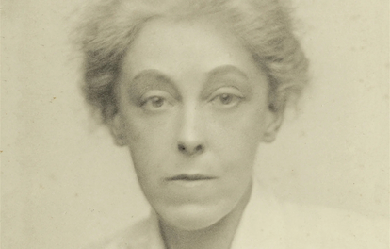
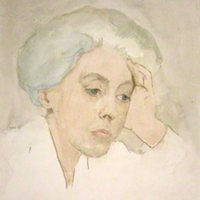
Charlotte Mary Mew (15 November 1869– 24 March 1928) was an English poetess, whose work spans the cusp between Victorian poetry and Modernism. She was born in Bloomsbury, London, the daughter of the architect Frederick Mew, who designed Hampstead town hall, and Anna Kendall.The marriage produced seven children. Charlotte, nicknamed Lotti by her family, attended Gower Street School, where she became infatuated with the school’s headmistress, Lucy Harrison, and lectures at University College London. Her father died in 1898 without making adequate provision for his family; two of her siblings suffered from mental illness, and were committed to institutions, and three others died in early childhood leaving Charlotte, her mother and her sister, Anne. Charlotte and Anne made a pact never to marry for fear of passing on insanity to their children. (One author calls Charlotte “almost certainly chastely lesbian)”. Through most of her adult life, Mew wore masculine attire and kept her hair short, adopting the appearance of a dandy.
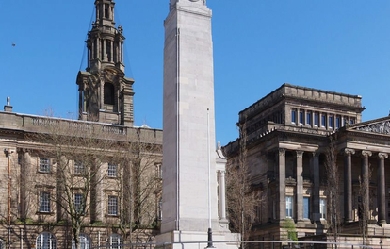
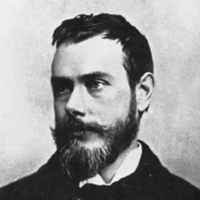
Francis Thompson (16 December 1859– 13 November 1907) was an English poet and ascetic. After attending college, he moved to London to become a writer, but could only find menial work and became addicted to opium, and was a street vagrant for years. A married couple read his poetry and rescued him, publishing his first book Poems in 1893. Thompson lived as an unbalanced invalid in Wales and at Storrington, but wrote three books of poetry, with other works and essays, before dying of tuberculosis in 1907. Life and work Thompson was born in Winckley Street, Preston, Lancashire. His father, Charles, was a doctor who had converted to Roman Catholicism, following his brother Edward Healy Thompson, a friend of Cardinal Manning. Thompson was educated at Ushaw College, near Durham, and then studied medicine at Owens College, now the University of Manchester. He took no real interest in his studies and never practised as a doctor, moving instead to London in 1885, to try to become a writer. Here he was reduced to selling matches and newspapers for a living. During this time, he became addicted to opium, which he first had taken as medicine for ill health. Thompson started living on the streets of Charing Cross and sleeping by the River Thames, with the homeless and other addicts. He was turned down by Oxford University, not because he was unqualified, but because of his drug addiction. Thompson attempted suicide in his nadir of despair, but was saved from completing the action through a vision which he believed to be that of a youthful poet Thomas Chatterton, who had committed suicide almost a century earlier. A prostitute– whose identity Thompson never revealed– befriended him, gave him lodgings and shared her income with him. Thompson was later to describe her in his poetry as his saviour. She soon disappeared, however, never to return, in his estimation because she feared she would taint his growing reputation. In 1888, he had been 'discovered’ after sending his poetry to the magazine Merrie England. He had been sought out by the magazine’s editors, Wilfrid and Alice Meynell. Recognizing the value of his work, the couple gave him a home and arranged for publication of his first book Poems in 1893. The book attracted the attention of sympathetic critics in the St James’s Gazette and other newspapers, and Coventry Patmore wrote a eulogistic notice in the Fortnightly Review of January 1894. Concerned about his opium addiction, which was at its height following his years on the streets, the Meynells sent Thompson to Our Lady of England Priory, Storrington. Thompson subsequently lived as an invalid at Pantasaph, Flintshire in Wales and at Storrington. A lifetime of extreme poverty, ill-health, and an addiction to opium took a heavy toll on Thompson, even though he found success in his last years. He would eventually die from tuberculosis at the age of 47, in the Hospital of St John and St Elizabeth and he is buried in St. Mary’s Roman Catholic Cemetery in Kensal Green. His tomb bears the last line from a poem he wrote for his godson - Look for me in the nurseries of Heaven. Style and influence His most famous poem, The Hound of Heaven, describes the pursuit of the human soul by God. This poem is the source of the phrase “with all deliberate speed,” used by the Supreme Court in Brown II, the remedy phase of the famous decision on school desegregation. A phrase in The Kingdom of God is the source of the title of Han Suyin’s novel Love Is a Many-Splendored Thing. In addition, Thompson wrote the most famous cricket poem, the nostalgic At Lord’s. He also wrote Sister Songs (1895), New Poems (1897), and a posthumously published essay, Shelley (1909). He wrote a treatise On Health and Holiness, dealing with the ascetic life, which was published in 1905. G. K. Chesterton said shortly after his death that “with Francis Thompson we lost the greatest poetic energy since Browning.” Among Thompson’s devotees was the young J. R. R. Tolkien, who purchased a volume of Thompson’s works in 1913-1914, and later said that it was an important influence on his own writing. The American novelist Madeleine L’Engle used a line from the poem The Mistress of Vision as the title of her last Vicki Austin novel, Troubling a Star. In 2011, Thompson’s life was the subject of the stage play and film script HOUND (Visions in the Life of the Poet Francis Thompson) by writer/director Chris Ward, which has been performed in various venues around London. Jack the Ripper suspect In his 1999 book Paradox, Australian author and educator Richard Patterson named Thompson as a possible identity of serial killer Jack the Ripper. On 6 November 2015, Patterson strengthened his claim. Home Thompson’s birthplace, in Winckley Street, Preston is marked by a memorial plaque. The inscription reads: "Francis Thompson poet was born in this house Dec 16 1859. Ever and anon a trumpet sounds, From the hid battlements of eternity." The home in Ashton-under-Lyne where Thompson lived from 1864 to 1885 was also marked with a blue plaque. In 2014, however, the building collapsed. References Wikipedia—https://en.wikipedia.org/wiki/Francis_Thompson
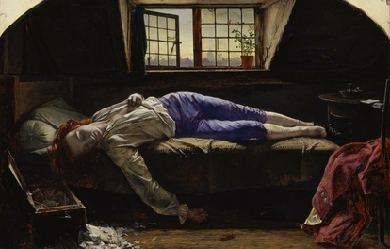
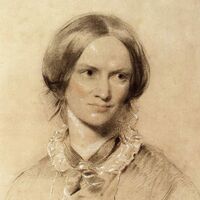
Charlotte Brontë (21 April 1816 – 31 March 1855) was an English novelist and poet, the eldest of the three Brontë sisters who survived into adulthood, whose novels are English literature standards. She wrote Jane Eyre under the pen name Currer Bell. Early life and education Charlotte was born in Thornton, Yorkshire in 1816, the third of six children, to Maria (née Branwell) and her husband Patrick Brontë (formerly surnamed Brunty or Prunty), an Irish Anglican clergyman. In 1820, the family moved a few miles to the village of Haworth, where Patrick had been appointed Perpetual Curate of St Michael and All Angels Church. Charlotte's mother died of cancer on 15 September 1821, leaving five daughters and a son to be taken care of by her sister Elizabeth Branwell. In August 1824, Charlotte was sent with three of her sisters, Emily, Maria, and Elizabeth, to the Clergy Daughters' School at Cowan Bridge in Lancashire (She used the school as the basis for Lowood School in Jane Eyre). The school's poor conditions, Charlotte maintained, permanently affected her health and physical development and hastened the deaths of her two elder sisters, Maria (born 1814) and Elizabeth (born 1815), who died of tuberculosis in June 1825. Soon after their deaths, her father removed Charlotte and Emily from the school. At home in Haworth Parsonage Charlotte acted as "the motherly friend and guardian of her younger sisters". She and her surviving siblings — Branwell, Emily, and Anne – created their own literary fictional worlds, and began chronicling the lives and struggles of the inhabitants of these imaginary kingdoms. Charlotte and Branwell wrote Byronic stories about their imagined country, "Angria", and Emily and Anne wrote articles and poems about "Gondal". The sagas they created were elaborate and convoluted (and still exist in partial manuscripts) and provided them with an obsessive interest during childhood and early adolescence, which prepared them for their literary vocations in adulthood. Charlotte continued her education at Roe Head in Mirfield, from 1831 to 1832, where she met her lifelong friends and correspondents, Ellen Nussey and Mary Taylor. Shortly after she wrote the novella The Green Dwarf (1833) using the name Wellesley. Charlotte returned to Roe Head as a teacher from 1835 to 1838. In 1839, she took up the first of many positions as governess to families in Yorkshire, a career she pursued until 1841. Politically a Tory, she preached tolerance rather than revolution. She held high moral principles, and, despite her shyness in company, was always prepared to argue her beliefs. Brussels In 1842 Charlotte and Emily travelled to Brussels to enrol in a boarding school run by Constantin Heger (1809–96) and his wife Claire Zoé Parent Heger (1804–87). In return for board and tuition, Charlotte taught English and Emily taught music. Their time at the boarding school was cut short when Elizabeth Branwell, their aunt who joined the family after the death of their mother to look after the children, died of internal obstruction in October 1842. Charlotte returned alone to Brussels in January 1843 to take up a teaching post at the school. Her second stay was not a happy one; she became lonely, homesick and deeply attached to Constantin Heger. She returned to Haworth in January 1844 and used her time at the boarding school as the inspiration for some experiences in The Professor and Villette. First publication In May 1846, Charlotte, Emily, and Anne self-financed the publication of a joint collection of poetry under the assumed names of Currer, Ellis and Acton Bell. These pseudonyms veiled the sisters' gender whilst preserving their real initials, thus Charlotte was "Currer Bell". "Bell" was the middle name of Haworth's curate, Arthur Bell Nicholls, whom Charlotte later married. On the decision to use noms de plume, Charlotte wrote: Averse to personal publicity, we veiled our own names under those of Currer, Ellis and Acton Bell; the ambiguous choice being dictated by a sort of conscientious scruple at assuming Christian names positively masculine, while we did not like to declare ourselves women, because — without at that time suspecting that our mode of writing and thinking was not what is called 'feminine' – we had a vague impression that authoresses are liable to be looked on with prejudice; we had noticed how critics sometimes use for their chastisement the weapon of personality, and for their reward, a flattery, which is not true praise. Although only two copies of the collection of poetry were sold, the sisters continued writing for publication and began their first novels, continuing to use their noms de plume when sending manuscripts to potential publishers. Jane Eyre Charlotte's first manuscript, The Professor, did not secure a publisher, although she was heartened by an encouraging response from Smith, Elder & Co of Cornhill, who expressed an interest in any longer works which "Currer Bell" might wish to send. Charlotte responded by finishing and sending a second manuscript in August 1847, and six weeks later Jane Eyre: An Autobiography, was published. Jane Eyre was a success, and initially received favourable reviews. There was speculation about the identity of Currer Bell, and whether Bell was a man or a woman. The speculation heightened on the subsequent publication of novels by Charlotte's sisters: Emily's Wuthering Heights by "Ellis Bell" and Anne's Agnes Grey by "Acton Bell". Accompanying the speculation was a change in the critical reaction to Charlotte's work; accusations began to be made that Charlotte's writing was "coarse", a judgement which was made more readily once it was suspected that "Currer Bell" was a woman. However sales of Jane Eyre continued to be strong, and may even have increased due to the novel's developing reputation as an 'improper' book. Shirley and family bereavements Following the success of Jane Eyre, in 1848 Charlotte began work on the manuscript of her second novel, Shirley. The manuscript was only partially completed when the Brontë household suffered a tragic turn of events, experiencing the deaths of three family members within eight months. In September 1848 Charlotte's only brother, Branwell, died of chronic bronchitis and marasmus exacerbated by heavy drinking, although Charlotte believed his death was due to tuberculosis. Branwell was a suspected "opium eater", a laudanum addict. Emily became seriously ill shortly after Branwell's funeral, and died of pulmonary tuberculosis in December 1848. Anne died of the same disease in May 1849. Charlotte was unable to write at this time. After Anne's death Charlotte resumed writing as a way of dealing with her grief, and Shirley was published in October 1849. Shirley deals with the themes of industrial unrest and the role of women in society. Unlike Jane Eyre, which is written from the first-person perspective of the main character, Shirley is written in the third-person and lacks the emotional immediacy of Jane Eyre, and reviewers found it less shocking. In society In view of the success of her novels, particularly Jane Eyre, Charlotte was persuaded by her publisher to visit London occasionally, where she revealed her true identity and began to move in a more exalted social circle, becoming friends with Harriet Martineau and Elizabeth Gaskell, and acquainted with William Makepeace Thackeray and G. H. Lewes. She never left Haworth for more than a few weeks at a time as she did not want to leave her ageing father's side. Thackeray’s daughter, the writer Anne Isabella Thackeray Ritchie recalled a visit to her father by Charlotte: …two gentlemen come in, leading a tiny, delicate, serious, little lady, with fair straight hair, and steady eyes. She may be a little over thirty; she is dressed in a little barège dress with a pattern of faint green moss. She enters in mittens, in silence, in seriousness; our hearts are beating with wild excitement. This then is the authoress, the unknown power whose books have set all London talking, reading, speculating; some people even say our father wrote the books – the wonderful books… The moment is so breathless that dinner comes as a relief to the solemnity of the occasion, and we all smile as my father stoops to offer his arm; for, genius though she may be, Miss Brontë can barely reach his elbow. My own personal impressions are that she is somewhat grave and stern, specially to forward little girls who wish to chatter… Every one waited for the brilliant conversation which never began at all. Miss Brontë retired to the sofa in the study, and murmured a low word now and then to our kind governess… the conversation grew dimmer and more dim, the ladies sat round still expectant, my father was too much perturbed by the gloom and the silence to be able to cope with it at all… after Miss Brontë had left, I was surprised to see my father opening the front door with his hat on. He put his fingers to his lips, walked out into the darkness, and shut the door quietly behind him… long afterwards… Mrs. Procter asked me if I knew what had happened… It was one of the dullest evenings [Mrs Procter] had ever spent in her life… the ladies who had all come expecting so much delightful conversation, and the gloom and the constraint, and how finally, overwhelmed by the situation, my father had quietly left the room, left the house, and gone off to his club. Friendship with Elizabeth Gaskell Charlotte sent copies of Shirley to leading authors of the day, including Elizabeth Gaskell. Gaskell and Charlotte met in August 1850 and began a friendship which, whilst not necessarily close, was significant in that Gaskell wrote Charlotte's biography after her death in 1855. The Life of Charlotte Brontë, was published in 1857 and was unusual at the time in that, rather than analysing its subject's achievements, it concentrated on the private details of Charlotte's life, in particular placing emphasis on aspects which countered the accusations of 'coarseness' which had been levelled at Charlotte's writing. Though frank in places, Gaskell was selective about which details she revealed; for example, she suppressed details of Charlotte's love for Heger, a married man, as being too much of an affront to contemporary morals and as a source of distress to Charlotte's still-living friends, father and husband. Gaskell also provided doubtful and inaccurate information about Patrick Brontë, claiming, for example, that he did not allow his children to eat meat. This is refuted by one of Emily Brontë's diary papers, in which she describes the preparation of meat and potatoes for dinner at the parsonage, as Juliet Barker points out in her biography, The Brontës. It has been argued that the particular approach of Mrs Gaskell transferred the focus of attention away from the 'difficult' novels, not just of Charlotte but all the sisters, and began a process of sanctification of their private lives. Villette Charlotte's third published novel, and the last to be published during her lifetime, was Villette, which came out in 1853. Its main themes include isolation, how such a condition can be borne, and the internal conflict brought about by societal repression of individual desire. Its main character, Lucy Snowe, travels abroad to teach in a boarding school in the fictional town of Villette, where she encounters a culture and religion different to her own, and where she falls in love with a man ('Paul Emanuel') whom she cannot marry. Her experiences result in her having a breakdown, but eventually she achieves independence and fulfilment in running her own school. Villette marked Charlotte's return to writing from a first-person perspective (that of Lucy Snowe), a technique she had used successfully in Jane Eyre. Another similarity to Jane Eyre was Charlotte's use of aspects from her own life as inspiration for fictional events, in particular reworking her time spent at the pensionnat in Brussels into Lucy spending time teaching at the boarding school, and falling in love with Constantin Heger into Lucy falling in love with 'Paul Emanuel'. Villette was acknowledged by the critics of the day as a potent and sophisticated piece of writing, although it was criticised for its 'coarseness' and not suitably 'feminine' in its portrayal of Lucy's desires. Illness and subsequent death In June 1854, Charlotte married Arthur Bell Nicholls, her father's curate and possibly the model for Jane Eyre's St. John Rivers. She became pregnant soon after the marriage. Her health declined rapidly during this time, and according to Gaskell, she was attacked by "sensations of perpetual nausea and ever-recurring faintness." Charlotte died, with her unborn child, on 31 March 1855, at the age of 38. Her death certificate gives the cause of death as phthisis (tuberculosis), but many biographers[who?] suggest she may have died from dehydration and malnourishment, caused by excessive vomiting from severe morning sickness or hyperemesis gravidarum. There is evidence to suggest that Charlotte died from typhus she may have caught from Tabitha Ackroyd, the Brontë household's oldest servant, who died shortly before her. Charlotte was interred in the family vault in the Church of St Michael and All Angels at Haworth. Posthumously, her first-written novel was published in 1857. The fragment she worked on in her last years in 1860 has been twice completed by recent authors, the more famous version being Emma Brown: A Novel from the Unfinished Manuscript by Charlotte Brontë by Clare Boylan in 2003. Much Angria material has appeared in published form since the author's death.
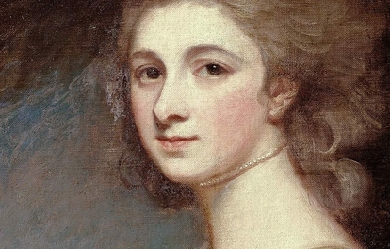
Mary Robinson (née Darby) (27 November 1757? – 26 December 1800) was an English actress, poet, dramatist, novelist, and celebrity figure. During her lifetime she was known as "the English Sappho".[1][2] She earned her nickname "Perdita" for her role as Perdita (heroine of Shakespeare's The Winter's Tale) in 1779. She was the first public mistress of King George IV while he was still Prince of Wales. Biography Early life Robinson was born in Bristol, England to John Darby, a naval captain, and his wife Hester (née Seys). In her memoirs, Robinson gives her birth in 1758 but the year 1757 seems more likely according to recently published research (see appendix to Byrne, 2005). Her father deserted her mother and took on a mistress when Robinson was still a child. The family hoped for a reconciliation, but Captain Darby made it clear that this was not going to happen. Without the support of her husband, Hester Darby supported herself and the five children born of the marriage by starting a school for young girls in Little Chelsea, London, (where Robinson taught by her 14th birthday). However, during one of his brief returns to the family, Captain Darby had the school closed (which he was entitled to do by English law). Robinson, who at one point attended a school run by the social reformer Hannah More, came to the attention of actor David Garrick. Marriage Hester Darby encouraged her daughter to accept the proposal of an articled clerk, Thomas Robinson, who claimed to have an inheritance. Mary was against this idea; however, after being stricken ill, and watching him take care of her and her younger brother, she felt that she owed him, and she did not want to disappoint her mother who was pushing for the engagement. After the early marriage, Robinson discovered that her husband did not have an inheritance. He continued to live an elaborate lifestyle, however, and had multiple affairs that he made no effort to hide. Subsequently, Mary supported their family. After her husband squandered their money, the couple fled to Wales (where Robinson’s only daughter, Mary Elizabeth, was born in November). Her husband was imprisoned for debt in the Fleet Prison where she accompanied him for many months. During this time, Mary Robinson found a patron in Georgiana Cavendish, Duchess of Devonshire, who sponsored the publication of Robinson’s first volume of poems, Captivity. Theatre After her husband obtained his release from prison, Robinson decided to return to the theatre. She launched her acting career and took to the stage, playing Juliet, at Drury Lane Theatre in December 1776. Robinson was best known for her facility with the 'breeches parts’, her performances as Viola in William Shakespeare’sTwelfth Night and Rosalind in As You Like It won her extensive praise. But she gained popularity with playing in Florizel and Perdita, an adaptation of Shakespeare, with the role of Perdita (heroine of The Winter’s Tale) in 1779. It was during this performance that she attracted the notice of the young Prince of Wales, later King George IV of the United Kingdom. He offered her twenty thousand pounds to become his mistress. With her new social prominence, Robinson became a trend-setter in London, introducing a loose, flowing muslin style of gown based upon Grecian statuary that became known as the Perdita. It took Robinson a considerable amount of time to decide to leave her husband for the Prince, as she did not want to be seen by the public as that type of woman. Throughout much of her life she struggled to live in the public eye and also to stay true to the values in which she believed. She eventually gave in to her desires to be with a man whom she thought would treat her better than Mr. Robinson. However, the Prince ended the affair in 1781, refusing to pay the promised sum. “Perdita” Robinson was left to support herself through an annuity promised by the Crown (but rarely paid), in return for some letters written by the Prince, and through her writings. Later life and death Mary Robinson, who now lived separately from her husband, went on to have several love affairs, most notably with Banastre Tarleton, a soldier who had recently distinguished himself fighting in the American War of Independence. Their relationship survived for the next 15 years, through Tarleton’s rise in military rank and his concomitant political successes, through Mary’s own various illnesses, through financial vicissitudes and the efforts of Tarleton’s own family to end the relationship. They had no children, although Robinson had a miscarriage. However, in the end, Tarleton married Susan Bertie, an heiress and an illegitimate daughter of the young 4th Duke of Ancaster, and niece of his sisters Lady Willoughby de Eresby and Lady Cholmondeley. In 1783, Robinson suffered a mysterious illness that left her partially paralysed. Biographer Paula Byrne speculates that a streptococcal infection resulting from a miscarriage led to a severe rheumatic fever that left her disabled for the rest of her life. From the late 1780s, Robinson became distinguished for her poetry and was called “the English Sappho”. In addition to poems, she wrote eight novels, three plays, feminist treatises, and an autobiographical manuscript that was incomplete at the time of her death. Like her contemporary Mary Wollstonecraft, she championed the rights of women and was an ardent supporter of the French Revolution. She died in late 1800 in poverty at the age of 43, having survived several years of ill health, and was survived by her daughter, who was also a published novelist. Literature After years of scholarly neglect, Robinson’s literary afterlife continues apace. While most of the early literature written about Robinson focused on her sexuality, emphasizing her affairs and fashions, she began to receive the attention of feminists and literary scholars in the 1990s. In addition to regaining literary and cultural notability, she has re-attained a degree of celebrity in recent years when several biographies of her appeared, including one by Paula Byrne entitled Perdita: The Literary, Theatrical, and Scandalous Life of Mary Robinson that became a top-ten best-seller after being selected for the Richard & Judy Book Club. Poetry Poems (1775) Captivity, A Poem and Celadon and Lydia, a Tale (1777) Poems (Vol. 1, 1791 / Vol. 2, 1793) London’s Summer Morning (1795) Sappho and Phaon: In a Series of Legitimate Sonnets (1796) Lyrical Tales (1800) Novels Vancenza; or, The Dangers of Credulity (1792) The Widow; or, A Picture of Modern Times (1794) Angelina; A Novel (1796) Hubert de Sevrac, A Romance, of the Eighteenth Century (1796) Walsingham: or, The Pupil of Nature, A Domestic Story (1797) The False Friend; A Domestic Story (1799) The Natural Daughter. With Portraits of the Leadenhead Family. A Novel (1799) Jasper, A Fragment [published posthumously in Memoirs of the Late Mrs. Robinson, Written by Herself (1801)] Dramas The Lucky Escape, A Comic Opera (Drury Lane, 1778) Nobody: A Comedy in Two Acts (Drury Lane, 1794) The Sicilian Lover: A Tragedy in Five Acts (never performed) Socio-political texts Impartial Reflections of the Present Situation of the Queen of France (1791) A Letter to the Women of England, on the Injustice of Mental Subordination (1799) Memoir Robinson, Mary [and Maria Elizabeth Robinson]. Memoirs of the Late Mrs. Robinson, Written by Herself. With Some Posthumous Pieces. 4 vols. London, 1801. Biographies of Robinson Byrne, Paula. Perdita: The Literary, Theatrical, and Scandalous Life of Mary Robinson. New York: Random House, 2004. Chisholm, Hugh, ed. (1911). “Robinson, Mary”. Encyclopædia Britannica 23 (11th ed.). Cambridge University Press. Davenport, Hester. The Prince’s Mistress: Perdita, a Life of Mary Robinson. Stroud: Sutton Publishing, 2004. Gristwood, Sarah. Perdita: Royal Mistress, Writer, Romantic. London: Bantam, 2005. Memoirs of Mary Robinson 1895. Knight, John Joseph (1897). “Robinson, Mary”. In Lee, Sidney. Dictionary of National Biography 49. London: Smith, Elder & Co. Ledoux, Ellen Malenas. “Florizel and Perdita Affair, 1779–80.” BRANCH: Britain, Representation and Nineteenth-Century History. Ed. Dino Franco Felluga. Extension of Romanticism and Victorianism on the Net. Web. 2 June 2013. Robinson, Mary [and Maria Elizabeth Robinson]. Memoirs of the Late Mrs. Robinson, Written by Herself. With Some Posthumous Pieces. 4 vols. London, 1801. Levy, Martin J. "Robinson, Mary [Perdita] (1756/1758?–1800)". Oxford Dictionary of National Biography (online ed.). Oxford University Press. doi:10.1093/ref:odnb/23857. (Subscription or UK public library membership required.) Resources on Robinson and her literature Brewer, William D., ed. The Works of Mary Robinson. 8 vols. Pickering & Chatto, 2009–2010. Gamer, Michael, and Terry F. Robinson. “Mary Robinson and the Dramatic Art of the Comeback.” Studies in Romanticism 48.2 (Summer 2009): 219–256. Pascoe, Judith. Mary Robinson: Selected Poems. Peterborough, ON: Broadview Press, 1999. Robinson, Daniel. The Poetry of Mary Robinson: Form and Fame. New York: Palgrave Macmillan, 2011. Robinson, Terry F. “Introduction.” Nobody. By Mary Robinson. Romantic Circles. Web. March 2013. Fictional works about Robinson Elyot, Amanda. All For Love: The Scandalous Life and Times of Royal Mistress Mary Robinson. A Novel. 2008. Lightfoot, Freda. Lady of Passion: The Story of Mary Robinson. 2013. Plaidy, Jean. Perdita’s Prince. 1969.
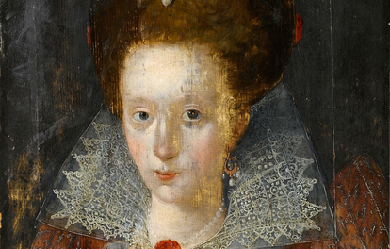
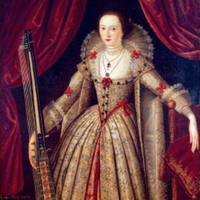
Lady Mary Wroth (18 October 1587– 1651/3) was an English poetess of the Renaissance. A member of a distinguished literary family, Lady Wroth was among the first female British writers to have achieved an enduring reputation. She is perhaps best known for having written The Countess of Montgomery’s Urania, the first extant prose romance by an English woman, and for Pamphilia to Amphilanthus, the second known sonnet sequence by an English woman. Wroth’s works also include Love’s Victory, a pastoral closet drama.
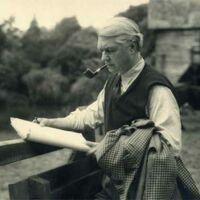
John Drinkwater (1 June 1882 – 25 March 1937) was an English poet and dramatist. Drinkwater was born in Leytonstone, London, and worked as an insurance clerk. In the period immediately before the First World War he was one of the group of poets associated with the Gloucestershire village of Dymock, along with Rupert Brooke and others. In 1919 he had his first major success with his play Abraham Lincoln. He followed it with others in a similar vein, including Mary Stuart and Oliver Cromwell. In 1924, his Lincoln play was adapted for a two-reel short film made by Lee DeForest and J. Searle Dawley featuring Frank McGlynn Sr. as Lincoln, and made in DeForest's Phonofilm sound-on-film process. He had published poetry since The Death of Leander in 1906; the first volume of his Collected Poems was published in 1923. He also compiled anthologies and wrote literary criticism (e.g. Swinburne: an estimate (1913)), and later became manager of Birmingham Repertory Theatre. He was married to Daisy Kennedy, the ex-wife of Benno Moiseiwitsch. Papers relating to John Drinkwater and collected by his stepdaughter are held at the University of Birmingham Special Collections. John Drinkwater made recordings in Columbia Records' International Educational Society Lecture series. They include Lecture 10 – a lecture on The Speaking of Verse (Four 78rpm sides, Cat no. D 40018-40019), and Lecture 70 John Drinkwater reading his own poems (Four 78rpm sides, Cat no. D 40140-40141). Death and commemoration Drinkwater died in London in 1937. He is buried at Piddington, Oxfordshire, where he had spent summer holidays as a child. A road in Leytonstone, formerly a 1960s council estate, is named after Drinkwater, as is a small development of modern houses in Piddington. References Wikipedia – en.wikipedia.org/wiki/John_Drinkwater_(playwright)
_by_Sir_Hubert_von_Herkomer.jpg?locale=es)
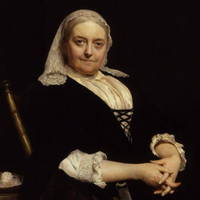
Dinah Maria Craik (/kreɪk/; born Dinah Maria Mulock, also often credited as Miss Mulock or Mrs. Craik) (20 April 1826– 12 October 1887) was an English novelist and poet. Life Mulock was born at Stoke-on-Trent to Dinah and Thomas Mulock and raised in Newcastle-under-Lyme, Staffordshire, where her father was then minister of a small congregation. Her childhood and early youth were much affected by his unsettled fortunes, but she obtained a good education from various quarters and felt called to be a writer. She came to London about 1846, much at the same time as two friends, Alexander Macmillan and Charles Edward Mudie. Introduced by Camilla Toulmin to Westland Marston, she rapidly made friends in London, and found great encouragement for the stories for the young. In 1865 she married George Lillie Craik a partner with Alexander Macmillan in the publishing house of Macmillan & Company, and nephew of George Lillie Craik. They adopted a foundling baby girl, Dorothy, in 1869. At Shortlands, near Bromley, Kent, while in a period of preparation for Dorothy’s wedding, she died of heart failure on 12 October 1887, aged 61. Her last words were reported to have been: “Oh, if I could live four weeks longer! but no matter, no matter!” Her final book, An Unknown Country, was published by Macmillan in 1887, the year of her death. Dorothy married Alexander Pilkington in 1887 but they divorced in 1911 and she went on to marry Captain Richards of Macmine Castle. She and Alexander had just one son John Mulock Pilkington. John married Freda Roskelly and they had a son and daughter. Works * Mulock’s early success began with the novel Cola Monti (1849), and in the same year she produced her first three-volume novel, The Ogilvies, to great success. It was followed in 1850 by Olive, then by The Head of the Family in 1851 and Agatha’s Husband in 1853, in which the author used her recollections of East Dorset. Mulock published the fairy story Alice Learmont in 1852, and collected numerous short stories from periodicals under the title of Avillion and other Tales in 1853. A similar collection appeared in 1857 under the title of Nothing New. * Thoroughly established in public favour as a successful author, Mulock took a cottage at Wildwood, North End, Hampstead, and joined an extensive social circle. Her personal attractions were at this period of her life considerable, and people kindly judged her simple cordiality, staunch friendliness, and thorough goodness of heart. In 1857 she published the work by which she will be principally remembered, John Halifax, Gentleman, a presentation of the ideals of English middle-class life. Mulock’s next important work, A Life for a Life (1859), made more money and was perhaps at the time more widely read than John Halifax, and was followed by Mistress and Maid (1863) and Christian’s Mistake (1865), followed by didactic works such as A Woman’s Thoughts about Women and Sermons out of Church. Another collection, titled The Unkind Word and Other Stories, included a scathing criticism of Benjamin Heath Malkin for overworking his son Thomas, a child prodigy who died at seven. Later on, Craik returned to more fanciful tales and achieved a great success with The Little Lame Prince (1874). In 1881 she published a collection of her earlier poems under the title Poems of Thirty Years, New and Old; some, such as Philip my King addressed to her godson Philip Bourke Marston and Douglas, Douglas, Tender and True achieved a wide popularity. Reception * Richard Garnett holds that “the genuine passion that filled her early works of fiction had not unnaturally faded out of middle life”, replaced by didacticism. To Garnett, Craik’s increasing self-awareness led to this. Garnett judges Craik’s poetry as “a woman’s poems, tender, domestic, and sometimes enthusiastic, always genuine song, and the product of real feeling”.
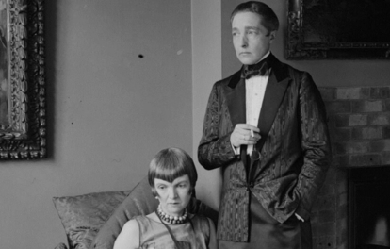
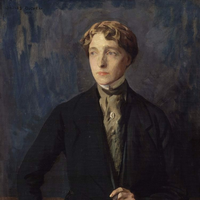
Marguerite Radclyffe Hall (12 August 1880– 7 October 1943) was an English poet and author. She is best known for the novel The Well of Loneliness, a groundbreaking work in lesbian literature. Life Marguerite Radclyffe Hall was born in 1880 at “Sunny Lawn”, Durley Road, Bournemouth, Hampshire (now Dorset), to a wealthy philandering father, Radclyffe Radclyffe-Hall, and an unstable mother, Mary Jane Diehl. Her stepfather was the professor of singing Albert Visetti, whom she did not like and who had a tempestuous relationship with her mother. Hall was a lesbian and described herself as a “congenital invert”, a term taken from the writings of Havelock Ellis and other turn-of-the-century sexologists. Having reached adulthood without a vocation, she spent much of her twenties pursuing women she eventually lost to marriage. In 1907 at the Bad Homburg spa in Germany, Hall met Mabel Batten, a well-known amateur singer of lieder. Batten (nicknamed “Ladye”) was 51 to Hall’s 27, and was married with an adult daughter and grandchildren. They fell in love, and after Batten’s husband died they set up residence together. Batten gave Hall the nickname John, which she used the rest of her life. In 1915 Hall fell in love with Mabel Batten’s cousin Una Troubridge (1887–1963), a sculptor who was the wife of Vice-Admiral Ernest Troubridge, and the mother of a young daughter. Batten died the following year, and in 1917 Radclyffe Hall and Una Troubridge began living together. From 1924 to 1929 they lived at 37 Holland Street, Kensington, London. The relationship would last until Hall’s death. In 1934 Hall fell in love with Russian émigrée Evguenia Souline and embarked upon a long-term affair with her, which Troubridge painfully tolerated. She became involved in affairs with other women throughout the years. Later years and death Hall lived with Troubridge in London and, during the 1930s, in the tiny town of Rye, East Sussex, noted for its many writers, including her contemporary the novelist E. F. Benson. Hall died at age 63 of colon cancer, and is interred at Highgate Cemetery in North London at the entrance of the chamber of the Batten family, where Mabel is buried as well. In 1930, Hall received the Gold Medal of the Eichelbergher Humane Award. She was a member of the PEN club, the Council of the Society for Psychical Research and a fellow of the Zoological Society. Radclyffe Hall was listed at number sixteen in the top 500 lesbian and gay heroes in The Pink Paper. Novels Hall’s first novel was The Unlit Lamp, the story of Joan Ogden, a young girl who dreams of setting up a flat in London with her friend Elizabeth (a so-called Boston marriage) and studying to become a doctor, but feels trapped by her manipulative mother’s emotional dependence on her. Its length and grimness made it a difficult book to sell, so she deliberately chose a lighter theme for her next novel, a social comedy entitled The Forge. While she had used her full name for her early poetry collections, she shortened it to M. Radclyffe Hall for The Forge. The book was a modest success, making the bestseller list of John O’London’s Weekly. The Unlit Lamp, which followed it into print, was the first of her books to give the author’s name simply as Radclyffe Hall. There followed another comic novel, A Saturday Life (1925), and then Adam’s Breed (1926), a novel about an Italian headwaiter who, becoming disgusted with his job and even with food itself, gives away his belongings and lives as a hermit in the forest. The book’s mystical themes have been compared to Hermann Hesse’s Siddhartha. It sold well, was critically acclaimed, and won both the Prix Femina and the James Tait Black Prize, a feat previously achieved only by E. M. Forster’s A Passage to India. The Well of Loneliness Hall’s best-known work was The Well of Loneliness, the only one of her eight novels to have overt lesbian themes. Published in 1928, The Well of Loneliness deals with the life of Stephen Gordon, a masculine lesbian who, like Hall herself, identifies as an “invert”. Although The Well of Loneliness is not sexually explicit, it was nevertheless the subject of an obscenity trial in the UK, which resulted in all copies of the novel being ordered destroyed. The United States allowed its publication only after a long court battle. It is currently published in the UK by Virago, and by Anchor Press in the United States. The Well of Loneliness was number seven on a list of the top 100 lesbian and gay novels compiled by The Publishing Triangle in 1999. Later novels An anonymous verse lampoon entitled The Sink of Solitude appeared during the controversy over The Well. Although its primary targets were James Douglas, who had called for The Well’s suppression, and the Home Secretary William Joynson-Hicks, who had started legal proceedings, it also mocked Hall and her book. One of the illustrations, which depicted Hall nailed to a cross, so horrified her that she could barely speak of it for years afterward. Her sense of guilt at being depicted in a drawing that she saw as blasphemous led to her choice of a religious subject for her next novel, The Master of the House. At Hall’s insistence, The Master of the House was published with no cover blurb, which may have misled some purchasers into thinking it was another novel about “inversion”. Advance sales were strong, and the book made No. 1 on The Observer’s bestseller list, but it received poor reviews in several key periodicals, and sales soon dropped off. In the United States reviewers treated the book more kindly, but shortly after the book’s publication, all copies were seized—not by the police, but by creditors. Hall’s American publisher had gone bankrupt. Houghton Mifflin took over the rights, but by the time the book could be republished, its sales momentum was lost. The Girls of Radcliff Hall The British composer and bon-vivant Gerald Tyrwhitt-Wilson, 14th Baron Berners, wrote a roman à clef girls’ school story entitled The Girls of Radcliff Hall, in which he depicts himself and his circle of friends, including Cecil Beaton and Oliver Messel, as lesbian schoolgirls at a school named “Radcliff Hall”. The novel was written under the pseudonym “Adela Quebec” and published and distributed privately; the indiscretions to which it alluded created an uproar among Berners’s intimates and acquaintances, making the whole affair highly discussed in the 1930s. Cecil Beaton attempted to have all the copies destroyed. The novel subsequently disappeared from circulation, making it extremely rare. The story is, however, included in Berners’ Collected Tales and Fantasies. Works Novels * The Forge (1924) * The Unlit Lamp (1924) * A Saturday Life (1925) * Adam's Breed (1926) * The Well of Loneliness (1928) * The Master of the House (1932) * Miss Ogilvy Finds Herself (1926) * The Sixth Beatitude (William Heineman Ltd, London, 1936) Poetry * Dedicated to Sir Arthur Sullivan (England: s.n., 1894) * Twixt Earth and Stars (London: John and Edward Bumpus Ltd., 1906) * A Sheaf of Verses : Poems (London: J. and E. Bumpus, 1908) * Poems of the Past & Present (London: Chapman And Hall, 1910) * Songs of Three Counties and Other Poems (London: Chapman & Hall, 1913) * The Forgotten Island (London: Chapman & Hall, 1915) * Rhymes and Rhythms (Milan, 1948) References Wikipedia—https://en.wikipedia.org/wiki/Radclyffe_Hall
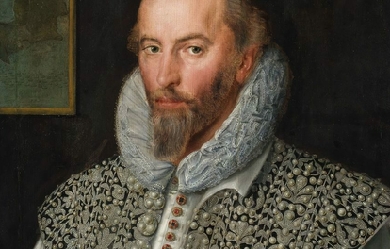
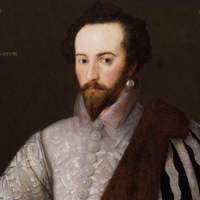
Sir Walter Ralegh (or Raleigh), British explorer, poet and historian, was born probably in 1552, though the date is not quite certain. His father, Walter Ralegh of Fardell, in the parish of Cornwood, near Plymouth, was a country gentleman of old family, but of reduced estate. Walter Ralegh the elder was three times married. His famous son was the child of his third marriage with Catherine, daughter of Sir Philip Champernown of Modbury, and widow of Otho Gilbert of Compton. By her first marriage she had three sons, John, Humphrey and Adrian Gilbert.
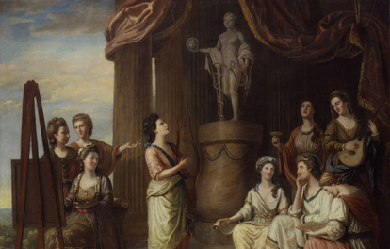

Anna Laetitia Barbauld (20 June 1743 – 9 March 1825) was a prominent English poetess, essayist, literary critic, editor and children’s author. A “woman of letters” who published in multiple genres, Barbauld had a successful writing career at a time when female professional writers were rare. She was a noted teacher at the Palgrave Academy and an innovative children’s writer; her primers provided a model for pedagogy for more than a century. Her essays demonstrated that it was possible for a woman to be publicly engaged in politics, and other women authors such as Elizabeth Benger emulated her. Barbauld’s literary career spanned numerous periods in British literary history: her work promoted the values of both the Enlightenment and Sensibility, and her poetry was foundational to the development of British Romanticism. Barbauld was also a literary critic, and her anthology of 18th-century British novels helped establish the canon as known today.
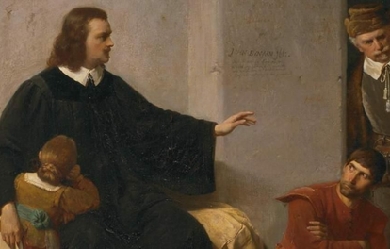
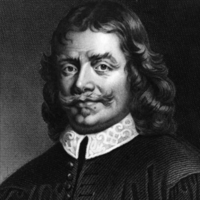
John Bunyan (/ˈbʌnjən/; baptised 30 November 1628– 31 August 1688) was an English writer and Baptist preacher best remembered as the author of the Christian allegory The Pilgrim’s Progress. In addition to The Pilgrim’s Progress, Bunyan wrote nearly sixty titles, many of them expanded sermons. Bunyan came from the village of Elstow, near Bedford. He had some schooling and at the age of sixteen joined the Parliamentary army during the first stage of the English Civil War. After three years in the army he returned to Elstow and took up the trade of tinker, which he had learned from his father. He became interested in religion after his marriage, attending first the parish church and then joining the Bedford Meeting, a nonconformist group in Bedford, and becoming a preacher. After the restoration of the monarch, when the freedom of nonconformists was curtailed, Bunyan was arrested and spent the next twelve years in jail as he refused to undertake to give up preaching. During this time he wrote a spiritual autobiography, Grace Abounding to the Chief of Sinners, and began work on his most famous book, The Pilgrim’s Progress, which was not published until some years after his release. Bunyan’s later years, in spite of another shorter term of imprisonment, were spent in relative comfort as a popular author and preacher, and pastor of the Bedford Meeting. He died aged 59 after falling ill on a journey to London and is buried in Bunhill Fields. The Pilgrim’s Progress became one of the most published books in the English language; 1,300 editions having been printed by 1938, 250 years after the author’s death. He is remembered in the Church of England with a Lesser Festival on 30 August, and on the liturgical calendar of the United States Episcopal Church on 29 August. Some other churches of the Anglican Communion, such as the Anglican Church of Australia, honour him on the day of his death (31 August). Early life John Bunyan was born in 1628 to Thomas and Margaret Bunyan at Bunyan’s End in the parish of Elstow, Bedfordshire. Bunyan’s End is located about half-way between the hamlet of Harrowden (one mile south-east of Bedford) and Elstow High Street. Bunyan’s date of birth is not known, but he was baptised on 30 November 1628, the baptismal entry in the parish register reading "John the sonne of Thomas Bunnion Jun., the 30 November". The name Bunyan was spelt in many different ways (there are 34 variants in Bedfordshire Record Office) and had its origins in the Norman-French name Buignon. There had been Bunyans in north Bedfordshire since at least 1199. Bunyan’s father was a brazier or tinker who travelled around the area mending pots and pans, and his grandfather had been a chapman or small trader. The Bunyans also owned land in Elstow, so Bunyan’s origins were not quite as humble as he suggested in his autobiographical work Grace Abounding to the Chief of Sinners when he wrote that his father’s house was “of that rank that is meanest and most despised in the country”. As a child Bunyan learnt his father’s trade of tinker and was given some rudimentary schooling. In Grace Abounding Bunyan recorded few details of his upbringing, but he did note how he picked up the habit of swearing (from his father), suffered from nightmares, and read the popular stories of the day in cheap chap-books. In the summer of 1644 Bunyan lost both his mother and his sister Margaret. That autumn, shortly before or after his sixteenth birthday, Bunyan enlisted in the Parliamentary army when an edict demanded 225 recruits from the town of Bedford. There are few details available about his military service, which took place during the first stage of the English Civil War. A muster roll for the garrison of Newport Pagnell shows him as private “John Bunnian”. In Grace Abounding, he recounted an incident from this time, as evidence of the grace of God: “When I was a Soldier I, with others were drawn out to go to such a place to besiege it; But when I was just ready to go, one of the company desired to go in my room, to which, when I had consented, he took my place; and coming to the siege, as he stood Sentinel, he was shot into the head with a Musket bullet and died.” Bunyan’s army service provided him with a knowledge of military language which he then used in his book The Holy War, and also exposed him to the ideas of the various religious sects and radical groups he came across in Newport Pagnell. The garrison town also gave him opportunities to indulge in the sort of behaviour he would later confess to in Grace Abounding: “So that until I came to the state of Marriage, I was the very ringleader of all the Youth that kept me company, in all manner of vice and ungodliness”. Bunyan spent nearly three years in the army, leaving in 1647 to return to Elstow and his trade as a tinker. His father had remarried and had more children and Bunyan moved from Bunyan’s End to a cottage in Elstow High Street. Marriage and conversion Within two years of leaving the army, Bunyan married. The name of his wife and the exact date of his marriage are not known, but Bunyan did recall that his wife, a pious young woman, brought with her into the marriage two books that she had inherited from her father: Arthur Dent’s Plain Man’s Pathway to Heaven and Lewis Bayly’s Practice of Piety. He also recalled that, apart from these two books, the newly-weds possessed little: “not having so much household-stuff as a Dish or a Spoon betwixt us both”. The couple’s first daughter, Mary, was born in 1650, and it soon became apparent that she was blind. They would have three more children, Elizabeth, Thomas and John. By his own account, Bunyan had as a youth enjoyed bell-ringing, dancing and playing games including on Sunday, thought by many to be the Sabbath, which was forbidden by the Puritan regime. One Sunday the vicar of Elstow preached a sermon against Sabbath breaking, and Bunyan took this sermon to heart. That afternoon, as he was playing tip-cat (a game in which a small piece of wood is hit with a bat) on Elstow village green, he heard a voice from the heavens “Wilt thou leave thy sins, and go to Heaven? Or have thy sins, and go to Hell?” The next few years were a time of intense spiritual conflict for Bunyan as he struggled with his doubts and fears over religion and guilt over what he saw as his state of sin. During this time Bunyan, whilst on his travels as a tinker, happened to be in Bedford and pass a group of women who were talking about spiritual matters on their doorstep. The women were in fact some of the founding members of the Bedford Free Church or Meeting and Bunyan, who had been attending the parish church of Elstow, was so impressed by their talk that he joined their church. At that time the nonconformist group was meeting in St John’s church in Bedford under the leadership of former Royalist army officer John Gifford. At the instigation of other members of the congregation Bunyan began to preach, both in the church and to groups of people in the surrounding countryside. In 1656, having by this time moved his family to St Cuthbert’s Street in Bedford, he published his first book, Gospel Truths Opened, which was inspired by a dispute with Quakers. In 1658 Bunyan’s wife died, leaving him with four small children, one of them blind. A year later he married an eighteen-year-old woman called Elizabeth. Imprisonment The religious tolerance which had allowed Bunyan the freedom to preach became curtailed with the restoration of the monarchy in 1660. The members of the Bedford Meeting were no longer able to meet in St John’s church, which they had been sharing with the Anglican congregation. That November, Bunyan was preaching at Lower Samsell, a farm near the village of Westoning, thirteen miles from Bedford, when he was warned that a warrant was out for his arrest. Deciding not to make an escape, he was arrested and brought before the local magistrate Sir Francis Wingate, at Harlington House. The Act of Uniformity, which made it compulsory for preachers to be ordained by an Anglican bishop and for the revised Book of Common Prayer to be used in church services, was still two years away, and the Act of Conventicles, which made it illegal to hold religious meetings of five or more people outside the Church of England was not passed until 1664. Bunyan was arrested under the Conventicle Act of 1593, which made it an offence to attend a religious gathering other than at the parish church with more than five people outside their family. The offence was punishable by 3 months imprisonment followed by banishment or execution if the person then failed to promise not to re-offend. The Act had been little used, and Bunyan’s arrest was probably due in part to concerns that non-conformist religious meetings were being held as a cover for people plotting against the king (although this was not the case with Bunyan’s meetings). The trial of Bunyan took place in January 1661 at the quarter sessions in Bedford, before a group of magistrates under John Kelynge, who would later help to draw up the Act of Uniformity. Bunyan, who had been held in prison since his arrest, was indicted of having “devilishly and perniciousy abstained from coming to church to hear divine service” and having held “several unlawful meetings and conventicles, to the great disturbance and distraction of the good subjects of this kingdom”. He was sentenced to three months imprisonment with transportation to follow if at the end of this time he didn’t agree to attend the parish church and desist from preaching. As Bunyan refused to agree to give up preaching, his period of imprisonment eventually extended to 12 years and brought great hardship to his family. Elizabeth, who made strenuous attempts to obtain his release, had been pregnant when her husband was arrested and she subsequently gave birth prematurely to a still-born child. Left to bring up four step-children, one of whom was blind, she had to rely on the charity of Bunyan’s fellow members of the Bedford Meeting and other supporters and on what little her husband could earn in gaol by making shoelaces. But Bunyan remained resolute: “O I saw in this condition I was a man who was pulling down his house upon the head of his Wife and Children; yet thought I, I must do it, I must do it”. Bunyan spent his 12 years’ imprisonment in Bedford County Gaol, which stood on the corner of the High Street and Silver Street. There were however occasions when he was allowed out of prison, depending on the gaolers and the mood of the authorities at the time, and he was able to attend the Bedford Meeting and even preach. His daughter Sarah was born during his imprisonment (the other child of his second marriage, Joseph, was born after his release in 1672). In prison, Bunyan had a copy of the Bible and of John Foxe’s Book of Martyrs, as well as writing materials. He also had at times the company of other preachers who had been imprisoned. It was in Bedford Gaol that he wrote Grace Abounding and started work on The Pilgrim’s Progress, as well as penning several tracts that may have brought him a little money. In 1671, while still in prison, he was chosen as pastor of the Bedford Meeting. By that time there was a mood of increasing religious toleration in the country and in March 1672 the king issued a declaration of indulgence which suspended penal laws against nonconformists. Thousands of nonconformists were released from prison, amongst them Bunyan and five of his fellow inmates of Bedford Gaol. Bunyan was freed in May 1672 and immediately obtained a licence to preach under the declaration of indulgence. Later life Following his release from gaol in 1672 Bunyan probably did not return to his former occupation of tinker. Instead he devoted his time to writing and preaching. He continued as pastor of the Bedford Meeting and travelled over Bedfordshire and adjoining counties on horseback to preach, becoming known affectionately as “Bishop Bunyan”. His preaching also took him to London, where Lord Mayor Sir John Shorter became a friend and presented him with a silver-mounted walking stick. The Pilgrim’s Progress was published in 1678 by Nathaniel Ponder and immediately became popular, though probably making more money for its publisher than for its author. Two events marred Bunyan’s life during the later 1670s. Firstly he became embroiled in a scandal concerning a young woman called Agnes Beaumont. When going to preach in Gamlingay in 1674 he allowed Beaumont, a member of the Bedford Meeting, to ride pillion on his horse, much to the anger of her father, who then died suddenly. His daughter was initially suspected of poisoning him, though the coroner found he had died of natural causes. And then in 1676-7 he underwent a second term of imprisonment, probably for refusing to attend the parish church. In 1688, on his way to London, Bunyan made a detour to Reading, Berkshire, to try and resolve a quarrel between a father and son. Continuing to London to the house of his friend, grocer John Strudwick of Snow Hill in the City of London, he was caught in a storm and fell ill with a fever. He died in Strudwick’s house on the morning of 31 August 1688 and was buried in the tomb belonging to Strudwick in Bunhill Fields nonconformist burial ground in London. Bunyan’s estate at his death was worth £42 19s 0d. His widow Elizabeth died in 1691. Works * Between 1656 when he published his first work, Some Gospel Truths Opened (a tract against the Quakers), and his death in 1688, Bunyan published 42 titles. A further two works, including his Last Sermon, were published the following year by George Larkin. In 1692 Southwark comb-maker Charles Doe, who was a friend of Bunyan’s later years, brought out, with the collaboration of Bunyan’s widow, a collection of the author’s works, including 12 previously unpublished titles, mostly sermons. Six years later Doe published The Heavenly Footman and finally in 1765 Relation of My Imprisonment was published, giving a total of 58 published titles. * It is the allegory The Pilgrim’s Progress, written during Bunyan’s twelve-year imprisonment although not published until 1678 six years after his release, that made Bunyan’s name as an author with its immediate success. It remains the book for which Bunyan is best remembered. The images Bunyan uses in The Pilgrim’s Progress are reflections of images from his own world; the strait gate is a version of the wicket gate at Elstow Abbey church, the Slough of Despond is a reflection of Squitch Fen, a wet and mossy area near his cottage in Harrowden, the Delectable Mountains are an image of the Chiltern Hills surrounding Bedfordshire. Even his characters, like the Evangelist as influenced by John Gifford, are reflections of real people. Further allegorical works were to follow: The Life and Death of Mr. Badman (1680), Pilgrim’s Progress Part II, and The Holy War (1682). Grace Abounding to the Chief of Sinners, a spiritual autobiography was published in 1666, when he was still in jail. Adaptations * In March, 2015 Director Darren Wilson announced a Kickstarter campaign to produce a full-length feature film based on The Pilgrims Progress called Heaven Quest: A Pilgrim’s Progress Movie. Memorials * In 1862 a recumbent statue was created to adorn Bunyan’s grave, and restored in 1922. * In 1874, a bronze statue of John Bunyan, sculpted by Sir Joseph Edgar Boehm, was erected in Bedford. This stands at the south-western corner of St Peter’s Green, facing down Bedford’s High Street. The site was chosen by Boehm for its significance as a crossroads. Bunyan is depicted expounding the Bible, to an invisible congregation, with a broken fetter representing his imprisonment by his left foot. There are three scenes from “The Pilgrim’s Progress” on the stone plinth: Christian at the wicket gate; his fight with Apollyon; and losing his burden at the foot of the cross of Jesus. The statue was unveiled by Lady Augusta Stanley, wife of the Dean of Westminster, on Wednesday 10 June 1874. In 1876 the Duke of Bedford gave bronze doors by Frederick Thrupp depicting scenes from The Pilgrim’s Progress to the Bunyan Meeting (the former Bedford Meeting which had been renamed in Bunyan’s honour). * There is another statue of him in Kingsway, London, and there are memorial windows in Westminster Abbey, Southwark Cathedral and various churches, including Elstow Abbey (the parish church of Elstow) and the Bunyan Meeting Free Church in Bedford. * Bunyan is remembered in the Church of England with a Lesser Festival on 30 August, and on the liturgical calendar of the United States Episcopal Church on 29 August. Some other churches of the Anglican Communion, such as the Anglican Church of Australia, honour him on the day of his death (31 August). Legacy * Bunyan is best remembered for The Pilgrim’s Progress, a book which gained immediate popularity. By 1692, four year’s after the author’s death, publisher Charles Doe estimated that 100,000 copies had been printed in England, as well as editions “in France, Holland, New England and Welch”. By 1938, 250 years after Bunyan’s death, more than 1,300 editions of the book had been printed. * During the 18th century Bunyan’s unpolished style fell out of favour, but his popularity returned with Romanticism, poet Robert Southey writing an appreciative biography in 1830. Bunyan’s reputation was further enhanced by the evangelical revival and he became a favourite author of the Victorians. The tercentenary of Bunyan’s birth, celebrated in 1928, elicited praise from his former adversary, the Church of England. Although popular interest in Bunyan waned during the second half of the twentieth century, academic interest in the writer has increased and Oxford University Press brought out a new edition of his works, beginning in 1976. Authors who have been influenced by Bunyan include Nathaniel Hawthorne, Herman Melville, Charles Dickens, Louisa May Alcott and George Bernard Shaw. * Bunyan’s work, in particular The Pilgrim’s Progress, has reached a wider audience through stage productions, film, TV, and radio. An opera by Ralph Vaughan Williams based on The Pilgrim’s Progress was first performed at the Royal Opera House in 1951 as part of the Festival of Britain and revived in 2012 by the English National Opera. * John Bunyan had six children, five of whom are known to have married, of which four had children. Moot Hall Museum (in Elstow) has a record of John’s descendants, down to the nineteenth century but as of September 2013, no verifiable trace of later descendants has been found. Selected bibliography * * Among Bunyan’s many works: References Wikipedia—https://en.wikipedia.org/wiki/John_Bunyan
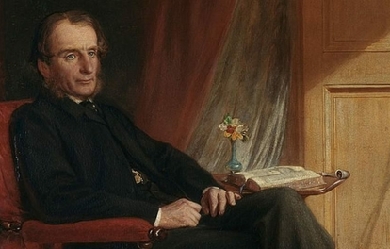
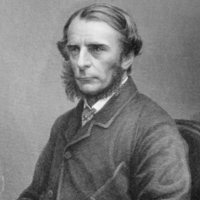
Charles Kingsley (12 June 1819– 23 January 1875) was a broad church priest of the Church of England, a university professor, historian and novelist. He is particularly associated with the West Country and northeast Hampshire. He was a friend and correspondent with Charles Darwin. Life and character Kingsley was born in Holne, Devon, the elder of two sons of the Reverend Charles Kingsley and his wife Mary Lucas Kingsley. His brother, Henry Kingsley, also became a novelist. He spent his childhood in Clovelly, Devon, where his father was Curate 1826–1832 and Rector 1832–1836, and at Barnack, Northamptonshire and was educated at Bristol Grammar School and Helston Grammar School before studying at King’s College London, and the University of Cambridge. Charles entered Magdalene College, Cambridge, in 1838, and graduated in 1842. He chose to pursue a ministry in the church. From 1844, he was rector of Eversley in Hampshire. In 1859 he was appointed chaplain to Queen Victoria. In 1860, he was appointed Regius Professor of Modern History at the University of Cambridge. In 1861 he became a private tutor to the Prince of Wales. In 1869 Kingsley resigned his Cambridge professorship and, from 1870 to 1873, was a canon of Chester Cathedral. While in Chester he founded the Chester Society for Natural Science, Literature and Art, which played an important part in the establishment of the Grosvenor Museum. In 1872 he accepted the Presidency of the Birmingham and Midland Institute and became its 19th President. In 1873 he was made a canon of Westminster Abbey. Kingsley died in 1875 and was buried in St Mary’s Churchyard in Eversley. Kingsley sat on the 1866 Edward Eyre Defence Committee along with Thomas Carlyle, John Ruskin, Charles Dickens and Alfred Lord Tennyson, where he supported Jamaican Governor Edward Eyre’s brutal suppression of the Morant Bay Rebellion against the Jamaica Committee. One of his daughters, Mary St Leger Kingsley, became known as a novelist under the pseudonym “Lucas Malet”. Kingsley’s life was written by his widow in 1877, entitled Charles Kingsley, his Letters and Memories of his Life. Kingsley also received letters from Thomas Huxley in 1860 and later in 1863, discussing Huxley’s early ideas on agnosticism. Influences and works Kingsley’s interest in history is shown in several of his writings, including The Heroes (1856), a children’s book about Greek mythology, and several historical novels, of which the best known are Hypatia (1853), Hereward the Wake (1865) and Westward Ho! (1855). He was sympathetic to the idea of evolution and was one of the first to welcome Charles Darwin’s book On the Origin of Species. He had been sent an advance review copy and in his response of 18 November 1859 (four days before the book went on sale) stated that he had “long since, from watching the crossing of domesticated animals and plants, learnt to disbelieve the dogma of the permanence of species.” Darwin added an edited version of Kingsley’s closing remarks to the next edition of his book, stating that “A celebrated author and divine has written to me that 'he has gradually learnt to see that it is just as noble a conception of the Deity to believe that He created a few original forms capable of self-development into other and needful forms, as to believe that He required a fresh act of creation to supply the voids caused by the action of His laws’.” When a heated dispute lasting three years developed over human evolution, Kingsley gently satirised the debate, known as the Great Hippocampus Question, as the “Great Hippopotamus Question”. Kingsley’s concern for social reform is illustrated in his classic, The Water-Babies, A Fairy Tale for a Land Baby (1863), a tale about a chimney sweep, which retained its popularity well into the 20th century. The story mentions the main protagonists in the scientific debate over human origins, rearranging his earlier satire as the “great hippopotamus test”. The book won a Lewis Carroll Shelf Award in 1963. His chief power as a novelist lay in his descriptive faculties. The descriptions of South American scenery in Westward Ho!, of the Egyptian desert in Hypatia, of the North Devon scenery in Two Years Ago, are brilliant; and the American scenery is even more vividly and more truthfully described when he had seen it only by the eye of his imagination than in his work At Last, which was written after he had visited the tropics. His sympathy with children taught him how to secure their interests. His version of the old Greek stories entitled The Heroes, and Water-babies and Madam How and Lady Why, in which he deals with popular natural history, take high rank among books for children. Kingsley was influenced by Frederick Denison Maurice, and was close to many Victorian thinkers and writers, including the Scottish writer George MacDonald. Kingsley was highly critical of Roman Catholicism and his argument, in print, with John Henry Newman, accusing him of untruthfulness and deceit, prompted the latter to write his Apologia Pro Vita Sua. Kingsley was racist towards the Irish and wrote in a letter to his wife from Ireland, 1860 "I am haunted by the human chimpanzees I saw along that hundred miles of horrible country [Ireland]...to see white chimpanzees is dreadful; if they were black one would not see it so much, but their skins, except where tanned by exposure, are as white as ours." Kingsley also wrote poetry and political articles, as well as several volumes of sermons. Kingsley coined the term pteridomania in his 1855 book Glaucus, or the Wonders of the Shore. Legacy Charles Kingsley’s novel Westward Ho! led to the founding of a village by the same name (the only place name in England with an exclamation mark) and inspired the construction of the Bideford, Westward Ho! and Appledore Railway. A hotel in Westward Ho! was named for and opened by him. A hotel opened in 1897 in Bloomsbury, London, was named after Kingsley. The hotel was founded by teetotallers who admired Kingsley for his political views and his ideas on social reform. It still exists and is now known as The Kingsley by Thistle. Bibliography * Yeast, a novel (1848) * Saint’s Tragedy, a drama * Alton Locke, a novel (1849) * Twenty-five Village Sermons (1849) * Cheap Clothes and Nasty (1850) * Phaeton, or Loose Thoughts for Loose Thinkers (1852) * Sermons on National Subjects (1st series, 1852) * Hypatia, a novel (1853) * Glaucus, or the Wonders of the Shore (1855) * Sermons on National Subjects (2nd series, 1854) * Alexandria and her Schools (I854) * Westward Ho!, a novel (1855) * Sermons for the Times (1855) * The Heroes, Greek fairy tales (1856) * Two Years Ago, a novel (1857) * Andromeda and other Poems (1858) * The Good News of God, sermons (1859) * Miscellanies (1859) * Limits of Exact Science applied to History (Inaugural lectures, 1860) * Town and Country Sermons (1861) * Sermons on the Pentateuch (1863) * The Water-Babies (1863) * The Roman and the Teuton (1864) * David and other Sermons (1866) * Hereward the Wake: “Last of the English”, a novel (London: Macmillan, 1866) * The Ancient Régime (Lectures at the Royal Institution, 1867) * Water of Life and other Sermons (1867) * The Hermits (1869) * Madam How and Lady Why (1869) * At Last: a Christmas in the West Indies (1871) * Town Geology (1872) * Discipline and other Sermons (1872) * Prose Idylls (1873) * Plays and Puritans (1873) * Health and Education (1874) * Westminster Sermons (1874) * Lectures delivered in America (1875) References Wikipedia—https://en.wikipedia.org/wiki/Charles_Kingsley

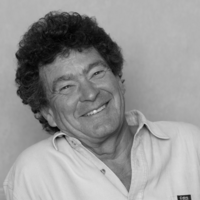
Brian Patten (born 7 February 1946) is an English poet Background Born near the Liverpool docks, Patten attended Sefton Park School in the Smithdown Road area of Liverpool, where he was noted for his essays and greatly encouraged in his work by Harry Sutcliffe, his form teacher. He left school at fifteen and began work for The Bootle Times writing a column on popular music. One of his first articles was on Roger McGough and Adrian Henri, two pop-oriented Liverpool poets who later joined Patten in a best-selling poetry anthology called The Mersey Sound, drawing popular attention to his own contemporary collections Little Johnny’s Confession (1967) and Notes to the Hurrying Man (1969). Patten received early encouragement from Philip Larkin. The collections Storm Damage (1988) and Armada (1996) are more varied, the latter featuring a sequence of poems concerning the death of his mother and memories of his childhood. Armada is perhaps Patten’s most mature and formal book, dispensing with much of the playfulness of former work. He has also written comic verse for children, notably Gargling With Jelly and Thawing Frozen Frogs. Patten’s style is generally lyrical and his subjects are primarily love and relationships. His 1981 collection Love Poems draws together his best work in this area from the previous sixteen years. Tribune has described Patten as “the master poet of his genre, taking on the intricacies of love and beauty with a totally new approach, new for him and for contemporary poetry.” Charles Causley once commented that he “reveals a sensibility profoundly aware of the ever-present possibility of the magical and the miraculous, as well as of the granite-hard realities. These are undiluted poems, beautifully calculated, informed– even in their darkest moments– with courage and hope.” Patten writes extensively for children as well as adults. He has been described as a highly engaging performer, and gives readings frequently. Over the years he has read alongside such poets as Pablo Neruda, Allen Ginsberg, Stevie Smith, Laurie Lee and Robert Lowell. His books have in recent years been translated into Italian, Spanish, German and Polish. His children’s novel Mr Moon’s Last Case won a special award from the Mystery Writers of America Guild. In 2002 Patten accepted the Cholmondeley Award for services to poetry. Together with Roger McGough and the late Adrian Henri, he was honoured with the Freedom of the City of Liverpool. Selected bibliography Poetry collections for adults * The Mersey Sound * Little Johnny’s Confession * Notes to the Hurrying Man * The Irrelevant Song * Vanishing Trick * Grave Gossip * Love Poems * Storm Damage * Grinning Jack * Armada * Selected Poems Penguin Books * The new Collected Love Poems * The projectionist’s nightmare * Geography lesson Books for children * The Elephant and the Flower * Jumping Mouse * Emma’s Doll * Gargling With Jelly * Mr Moon’s Last Case * Jimmy Tag-Along * Thawing Frozen Frogs * Juggling With Gerbils * The Story Giant * Impossible Parents, illustrated by Arthur Robins (Walker Books, 1994), OCLC 31708253 * The Impossible Parents Go Green, illus. Robins (Walker, 2000) * The Most Impossible Parents, illus. Robins (Walker, 2010) As editor * The Puffin Book of Utterly Brilliant Poetry * The Puffin Book of Modern Children’s Verse References Wikipedia—https://en.wikipedia.org/wiki/Brian_Patten
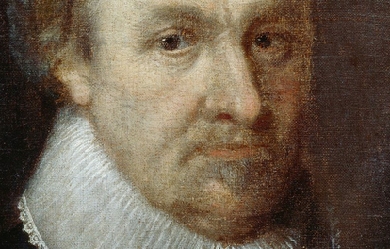
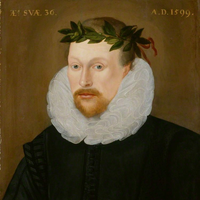
Michael Drayton (1563– 23 December 1631) was an English poet who came to prominence in the Elizabethan era. Early life Drayton was born at Hartshill, near Nuneaton, Warwickshire, England. Almost nothing is known about his early life, beyond the fact that in 1580 he was in the service of Thomas Goodere of Collingham, Nottinghamshire. Nineteenth– and twentieth-century scholars, on the basis of scattered allusions in his poems and dedications, suggested that Drayton might have studied at the University of Oxford, and been intimate with the Polesworth branch of the Goodere family. More recent work has cast doubt on those speculations. Literary career 1591–1602 In 1591 he produced his first book, The Harmony of the Church, a volume of spiritual poems, dedicated to Lady Devereux. It is notable for a version of the Song of Solomon, executed with considerable richness of expression. However, with the exception of forty copies, seized by the Archbishop of Canterbury, the whole edition was destroyed by public order. Nevertheless, Drayton published a vast amount within the next few years. In 1593 appeared Idea: The Shepherd’s Garland, a collection of nine pastorals, in which he celebrated his own love-sorrows under the poetic name of Rowland. The basic idea was expanded in a cycle of sixty-four sonnets, published in 1594, under the title of Idea’s Mirror, by which we learn that the lady lived by the river Ankor in Warwickshire. It appears that he failed to win his “Idea,” and lived and died a bachelor. It has been said Drayton’s sonnets possess a direct, instant, and universal appeal, by reason of their simple straightforward ring and foreshadowed the smooth style of Fairfax, Waller, and Dryden. Drayton was the first to bring the term ode, for a lyrical poem, to popularity in England and was a master of the short, staccato Anacreontics measure. Also in 1593 there appeared the first of Drayton’s historical poems, The Legend of Piers Gaveston, and the next year saw the publication of Matilda, an epic poem in rhyme royal. It was about this time, too, that he brought out Endimion and Phoebe, a volume which he never republished, but which contains some interesting autobiographical matter, and acknowledgments of literary help from Thomas Lodge, if not from Edmund Spenser and Samuel Daniel also. In his Fig for Momus, Lodge reciprocated these friendly courtesies. In 1596 Drayton published his long and important poem Mortimeriados, a very serious production in ottava rima. He later enlarged and modified this poem, and republished it in 1603 under the title of The Barons’ Wars. In 1596 also appeared another historical poem, The Legend of Robert, Duke of Normandy, with which Piers Gaveston was reprinted. In 1597 appeared England’s Heroical Epistles, a series of historical studies, in imitation of those of Ovid. These last poems, written in the heroic couplet, contain some of the finest passages in Drayton’s writings. 1603–1631 By 1597, the poet was resting on his laurels. It seems that he was much favoured at the court of Elizabeth, and he hoped that it would be the same with her successor. But when, in 1603, he addressed a poem of compliment to James I, on his accession, it was ridiculed, and his services rudely rejected. His bitterness found expression in a satire, The Owl (1604), but he had no talent in this kind of composition. Not much more entertaining was his scriptural narrative of Moses in a Map of his Miracles, a sort of epic in heroics printed the same year. In 1605 Drayton reprinted his most important works, his historical poems and the Idea, in a single volume which ran through eight editions during his lifetime. He also collected his smaller pieces, hitherto unedited, in a volume undated, but probably published in 1605, under the title of Poems Lyric and Pastoral; these consisted of odes, eclogues, and a fantastic satire called The Man in the Moon. Some of the odes are extremely spirited. In this volume he printed for the first time the famous Ballad of Agincourt. He had adopted as early as 1598 the extraordinary resolution of celebrating all the points of topographical or antiquarian interest in the island of Great Britain, and on this laborious work he was engaged for many years. At last, in 1613, the first part of this vast work was published under the title of Poly-Olbion, eighteen books being produced, to which the learned Selden supplied notes. The success of this great work, which has since become so famous, was very small at first, and not until 1622 did Drayton succeed in finding a publisher willing to undertake the risk of bringing out twelve more books in a second part. This completed the survey of England, and the poet, who had hoped “to crown Scotland with flowers,” and arrive at last at the Orcades, never crossed the Tweed. In 1627 he published another of his miscellaneous volumes, and this contains some of his most characteristic writing. It consists of the following pieces: The Battle of Agincourt, an historical poem in ottava rima (not to be confused with his ballad on the same subject), and The Miseries of Queen Margaret, written in the same verse and manner; Nimphidia, the Court of Faery, a most joyous and graceful little epic of fairyland; The Quest of Cinthia and The Shepherd’s Sirena, two lyrical pastorals; and finally The Moon Calf, a sort of satire. Nimphidia is the most critically acclaimed, along with his famous ballad on the battle of Agincourt; it is quite unique of its kind and full of rare fantastic fancy. The last of Drayton’s voluminous publications was The Muses’ Elizium in 1630. He died in London, was buried in Poets’ Corner in Westminster Abbey, and had a monument placed over him by the Countess of Dorset, with memorial lines attributed to Ben Jonson. Theatre Like other poets of his era, Drayton was active in writing for the theatre; but unlike Shakespeare, Ben Jonson, or Samuel Daniel, he invested little of his art in the genre. For a period of only five years, from 1597 to 1602, Drayton was a member of the stable of playwrights who supplied material for the theatrical syndicate of Philip Henslowe. Henslowe’s Diary links Drayton’s name with 23 plays from that period, and shows that Drayton almost always worked in collaboration with other Henslowe regulars, like Thomas Dekker, Anthony Munday, and Henry Chettle, among others. Of these 23 plays, only one has survived, that being Part 1 of Sir John Oldcastle, which Drayton composed in collaboration with Munday, Robert Wilson, and Richard Hathwaye. The text of Oldcastle shows no clear signs of Drayton’s hand; traits of style consistent through the entire corpus of his poetry (the rich vocabulary of plant names, star names, and other unusual words; the frequent use of original contractional forms, sometimes with double apostrophes, like “th’adult’rers” or “pois’ned’st”) are wholly absent from the text, suggesting that his contribution to the collaborative effort was not substantial. William Longsword, the one play that Henslowe’s Diary suggests was a solo Drayton effort, was never completed. (Drayton may have preferred the role of impresario to that of playwright; he was one of the lessees of the Whitefriars Theatre, together with Thomas Woodford, nephew of the playwright Thomas Lodge, when it was started in 1608. Around 1606, Drayton was also part of a syndicate that chartered a company of child actors, The Children of the King’s Revels. These may or may not have been the Children of Paul’s under a new name, since the latter group appears to have gone out of existence at about this time. The venture was not a success, dissolving in litigation in 1609.) Friendships Drayton was a friend of some of the most famous men of the age. He corresponded familiarly with Drummond; Ben Jonson, William Browne, George Wither and others were among his friends. There is a tradition that he was a friend of Shakespeare, supported by a statement of John Ward, once vicar of Stratford-on-Avon, that “Shakespear, Drayton and Ben Jonson had a merry meeting, and it seems, drank too hard, for Shakespear died of a feavour there contracted.” In one of his poems, an elegy or epistle to Mr Henry Reynolds, he has left some valuable criticisms on poets whom he had known. That he was a restless and discontented, as well as a worthy, man may be gathered from his own admissions. Editions In 1748 a folio edition of Drayton’s complete works was published under the editorial supervision of William Oldys, and again in 1753 there appeared an issue in four volumes quarto. But these were very unintelligently and inaccurately prepared. A complete edition of Drayton’s works with variant readings was projected by Richard Hooper in 1876, but was never carried to a conclusion; a volume of selections, edited by A. H. Bullen, appeared in 1883. See especially Oliver Elton, Michael Drayton (1906). A complete five-volume edition of Drayton’s work was published by Oxford in 1931-41 (revised 1961), edited by J. William Hebel, K. Tillotson and B. H. Newdigate. That and a two volume edition of Drayton’s poems published at Harvard in 1953, edited by John Buxton, are the only 20th century editions of his poems recorded by the Library of Congress. References Wikipedia—https://en.wikipedia.org/wiki/Michael_Drayton
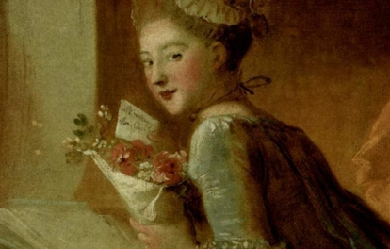

Mary Barber (c.1685– C.1755), poet, was a member of Swift’s circle. Life Mary’s parents are not known. She married the amateur artist and draper, Rupert Barber (1719-1772) from Dublin, whose pastel portrait of Swift hangs in the National Portrait Gallery London. They had nine children, four of whom survived to adulthood. She wrote, in the preface to her Poems, that she wrote mainly in order to educate her children, but most commentators agree that she had a larger audience in view and was considerably engaged with intervening in wider social and political issues, as she did with “The Widow’s Address” when she argued on behalf of the widow of an army officer. She is an example of the eighteenth-century phenomenon of the “untutored poet, or 'natural genius’”: an artist of unprepossessing background who achieved the patronage of literary or aristocratic notables. Swift named her as part of his “triumfeminate,” along with poet and scholar Constantia Grierson and literary critic Elizabeth Sican, and maintained that she was a preeminent poet—"the best Poetess of both Kingdoms"—though this assessment was not universally shared and she has only recently garnered much critical attention. She moved into his circle and knew Laetitia Pilkington, who later became her harshest critic, Mary Delany, and poets Thomas Tickell, and Elizabeth Rowe. Swift’s patronage was a substantial support to Barber’s career and her Poems on several occasions (1734) was successful. The subscription list for the volume was almost “without precedent for its resplendent length and illustrious contents, and it was moreover remarkable given Barber’s otherwise pedestrian social standing as an ailing Irish housewife.” There were over nine hundred subscribers including various aristocrats and a number of literary luminaries, notably Pope, Arbuthnot, Gay, Walpole, and of course Swift himself. She did not, however, achieve financial stability until at her request and in order to alleviate her financial distress, Swift gave her the English rights to his Complete Collection of Genteel and Ingenious Conversation (1738). Her health declined after the publication of her Poems and subsequent writing was sparse. She did publish some verses about the gout, from which she suffered for over two decades, in the Gentleman’s Magazine in 1737. She died in or around 1755. Works * “The Widow’s Address” (Dublin, 1725) * “A Tale Being an Addition to Mr. Gay’s Fables” (Dublin, 1728) * Tunbrigialia, or, Tunbridge Miscellanies, for the Year 1730 (contributor). * Poems on several occasions (sold by subscription, printed by Samuel Richardson, 1734. 2nd ed. 1735; reissued 1736). * Poems by Eminent Ladies (contributor, 1755). Resources * Coleborne, Bryan. “Barber, Mary (c.1685–1755).” Oxford Dictionary of National Biography. Ed. H. C. G. Matthew and Brian Harrison. Oxford: OUP, 2004. 1 Apr. 2007. * Fanning, Christopher. “The Voices of the Dependent Poet: the case of Mary Barber.” Women’s Writing 8.1 (2001): 81-97. * Lonsdale, Roger ed. “Mary Barber.” Eighteenth-Century Women Poets. New York: Oxford University Press, 1989. 118-129.


